Leaderboard
Popular Content
Showing content with the highest reputation on 09/16/2021 in all areas
-
Sometimes there are just a lot of targets on the beach ... you dig and you dig and you dig and some of them are rings! Two of these rings are gold (18k/14k), two are silver (.925) and two are junk. When the energy is about it time to go out. These were the total finds for my session with the 800/15. There was about $10.00 in clad ($7 in quarters). This 3.6g/18k (marked 750) has some stones. I need to clean it in the ultra sound. I went back for a session with the 3030 and found this 1.6g/14k in the dry sand.13 points
-
I’d agree with half and disagree with half. Especially saying an Equinox 800 can’t handle nugget detecting in mineralized ground… dead wrong. That’s just old school thinking that has not kept up with reality. I have noticed that as some detectorists age, there is a tendency at some point to just stick with some tried and true model, and discount newer machines as not really offering all that much. In fact I remember one forum that died, because most of the members started claiming digital could never be as good as their old analogs. People like me left at that point. I’ll admit though I am as much into the tech as I am into prospecting, so playing with the latest machines is gratifying for me in and of itself. Anyone that thinks we are not ahead of where we were 20 years ago….. I think we are. GPZ was a true advance, just one recent example. I’d also say if a person is borderline physically restricted, a GPX 6000 will help a person using a heavier, more cumbersome machine get more hours in the day. Finally, I personally know a new machine does actually improve my mental state for quite a while. I get bored with old machines, and a new one puts a spring in my step, makes me want to rehunt all the old locations I gave up on with the other machines. A new detector can change your mental state for the better. But again, that’s just a personal thing, not a right or wrong thing. I like playing with new toys, others prefer the comfort of the known. I do agree with the “different” thing, in that Minelab specifically designs their new machines to go after gold their earlier models missed. Filling in the gaps, so to speak. That can work backwards also - putting any machine on ground that has never seen a particular tech can pay off. If ground has only been hunted with a PI, a VLF has a good shot at revealing stuff missed by a PI. The truth is no one machine gets it all - it takes multiple machines and multiple coils to really work a patch out. So I’d take it a step farther. Different can actually be better, simply because it IS different. Overall though he is right, the operator is the real key, and a good operator will be successful with dozens of detectors. I can grab anything halfway capable and go find gold, and I think that’s the real message here. That, and do enjoy the day… don’t ever let lack of gold ruin a good time!11 points
-
We've been in a bit of a Covid lock-down recently and during that time my Garrett 24k arrived so I wasn't able to use it in the gold fields straight away, it was quite painful to look at it knowing I can't go and use it, fortunately we came out of our lock-down and as took off for a prospect with the 24k as soon as I could. I ordered a White's 6" concentric coil for it to tie me over until Garrett and with any luck Nel come out with other coils for it, I hope they continue with the 6" Concentric as I'll buy a Garrett 6" Concentric as soon as they release it. It's a remarkably sensitive coil, I expected it to be less sensitive than it is as it's quite big however it surprised me and matches or exceeds smaller coils on other high frequency gold detectors. I've always been happy with Garrett coil quality so upgrading the Whites to a Garrett would be worthwhile I think. In saying that, neither the 10x6" Garrett coil or the Whites 6" coil were at all bump sensitive, not one bump noise the entire day. I'm so used to coil bump sensitivity from the Equinox and Gold Monster it was a rather pleasurable experience being able to scrub the coil on the ground like mad and bump it around not setting off the detector, giving me a distinct advantage over using bump sensitive coils. I started the day using the 10x6" Coil as I wanted to see how it goes and I was going back to a spot I'd found a fair few grams of gold in the past, about 30 or more nuggets using the scrape and detect method taking off layers of soil at a time and detecting it. The initial nugget which was just under half a gram and a fair few more were found using my GPZ including a 4.2 gram nugget and then I brought in the Equinox with 6" coil to clean up as a majority of the nuggets were very small and the VLF's tend to do better cleaning up these very small nuggets. I'd even gone over this little scrape and detect area with the Gold Bug 2 however it was a bit of a nightmare as the area is absolutely full of hot rocks and the Gold Bug 2 in heavy hot rocks isn't a good detector in my opinion, it's too busy making it's response noise to the hot rocks to worry about the bits of gold next to the hot rocks so you miss nuggets if they're near hot rocks. The problem is this spot is loaded with hot rocks all through the soil of various shapes and sizes mostly a green type of schist that is all crumbly and broken up and detectors love to sound off on it. It's likely there from the old timers, it's basically some old workings where the old timers left their rock pile in a little gully, and right on the lower downhill side of the rock pile was my little scrape and detect patch. Even the GPZ struggled with all of the hot rocks so I was quite pleased how the 24k was coping with them, sure it was sounding off on some of them too but it wasn't too troublesome and seemed to ignore the little broken up bits and very usable. I ran the 24k with the sensitivity maxed out, Sat on the middle setting and audio on Boost 2. The ground balance was quick and easy then I switched into the Locked balance mode. If the broken up schist bits of hot rock were too severe I left it in tracking which helped to knock them out. I gave the 6" Concentric coil a quick try and it struggled more with the hot rocks and i didn't want to lower my sensitivity down so I reverted back to the DD which appeared to handle them better and is still remarkably sensitive. So I just started scraping back layers and detecting taking about 2 inches off at a time knowing the gold here is likely going to be very small and it will be stuff I've missed in the past as I've scraped this spot out before and back filled it so I was essentially checking the same soil all over again for anything I missed. I had high hopes I had missed some as all it would take is a small hot rock to be sitting on top of the bit of gold the previous time and I'd likely miss it or just the bit of gold on it's side being a very thin one or any number of reasons, even just at a depth too deep for the size of gold with the detector I was using. It wasn't long and I had my first piece. Quite a decent size one too, I was baffled at the time why I'd missed this one in the past. The 24k had now found it's first gold, highly likely the first piece of gold found in New Zealand with the Garrett 24k, a badge I'll wear proudly. 🙂 Next up was a reasonably faint but very repeatable signal with no target ID showing, I delicately used my scoop to scrape soil away knowing this was likely a very small bit of gold and it sure was... my smallest bit of the day too and surprised I managed to find it with the 10x6" coil, I don't recall ever finding a bit this small using the 10x5" type size on other detectors. Can you spot it? 🙂 There it is! 0.007 of a gram, not bad for the 10x6" coil, especially in this hot rock infested ground. I always check targets in case they're odd little bits of metal with my pick magnet, and you'll see it was quick to build up black sand, this soil has plenty of it in it. I kept scraping down layers and found another. Quite small too... but a bit more meat on it than the previous one 🙂 I'd had enough of the scrape and detect spot by now and wanted to go explore a bit to see how the 24k performed for general detecting so I walked for about 10 minutes to another spot I'd found some gold in the past and detected for about an hour digging plenty of shotgun pellets, completely normal in this area as there is a rabbit plague that causes countless thousands of shotgun pellets to be distributed all over the place for me to clean up 🙂 I didn't have high hopes as myself and a friend (JW) have absolutely thrashed this area but it's always possible to miss gold when there is so many pellets. We generally scrape a few times and if the signal persists dig it, if it moves after the first scrapes ignore it thinking it's very likely a pellet. A few pictures of the sort of terrain I was detecting. My batteries went down to 2 bars quite quickly, within an hour. I assume as they're rechargeable and run at 1.2 volts instead of 1.5 volts for standard AA's but it stayed at the two bars for the entire day so still plenty of life left in them yet by the looks of it. Pretty wild rocky terrain and only really suitable for smaller coils. The GPZ with it's stock coil is terrible here, the smaller the coil the better in general. I did manage to find a piece though, after a lot of pellet digs 🙂 Not a bad size bit for the area too I now decided I'd put the Whites 6" Concentric coil on and give it another go as this area doesn't have near as many hot rocks as my scrape and detect spot. I found a bit of raised bedrock and had a signal that persisted down into the schist. At this point it almost had to be gold so I started filming. And it was gold 🙂 I had to break up the schist to get it out. A nice little piece too, a roundish flat one. This area has plenty of black sand too, this was my pick after checking that bedrock in case it was a steel shotgun pellet. It was getting near time to go get some dinner and I was pretty satisfied to even get one nugget in this area but I kept going a little while longer and it paid off. I like the bulls eye sight on the 6" coil, it really is the hot spot too, great for pinpointing. I had a signal that persisted down into the gravels on the bedrock. And got this one! It's hard to tell the depth in the photo but it was a reasonable depth. A few inches anyway. And that was it for the day, I was starving! So, do I like the 24K? You're damn right I do, it certainly exceeded my expectations and will now be my primary VLF gold detector replacing my Equinox which replaced my Gold Monster, and the Gold Bug 2 was just not for me, I didn't gel with it at all especially with the masking from hot rocks. I look forward to getting more coils for the 24k, especially smaller ones, and judging by how well it handled the hot rocks I wouldn't mind a larger size coil for ground coverage too. The total for the day. Very happy with the results.6 points
-
I almost threw out this tiny gold nugget while panning cons, thought it was a trash rock, but it caught my eye for some reason.Held it up close to eyeball and it was golden metallic yellow, NOT sand, and bounces an inch when dropped in my gold pan. I got it sluicing gravels with my home made electric 18 inch long sluice/banker, like 10 feet from the creek where I found a gold gravel deposit with my map dowsing . About the size of 2 pinheads side by side, dime for comparison, casts a shadow in gold pan... came from central Indiana near Attica....5 points
-
Ok, I’m going to step in directly here and ask that there is no discussion of adapters, and the issues that can be caused by cutting and modifying things. A Minelab coil needs to be cut open, and the security chip extracted, an inline adapter made, and the coil patched. Then the adapter can be used with both the original Minelab coil, and any x coils. If this sounds a bit tricky - it is. If done wrong severe damage to the detector may result. I’m pretty sure we all get that now, and it simply runs these threads off the rails when it comes up. Warning, warning, Will Robinson, doing this stuff may cause issues! Could blow up your GPX with no warranty coverage, and lots of out of pocket to repair. Or may simply result in erratic and unpredictable performance issues of a more subtle sort. Coils might work great in some ground, and not in other ground. Buyer beware. OK, with that out of the way, let’s focus on what these coils can do in a more positive fashion. I like hearing about even if I’m unlikely to ever go the adapter route myself. I know others are interested also, and the whole point of the forum is information people want. Consider this post the official disclaimer for the thread in that regard. I’ll delete anything further as regards all that if it comes up in this thread. Thanks.5 points
-
Sounds alot like a golf, or fishing obsession! But unlike those, when you calm down, you can go back and find your "thrown in disgust'" items, with ease!! With one of your other detectors!!🤣👍👍5 points
-
I was pretty excited about this one so I couldn't resist posting the video of it, it's a 12x6" prototype test coil being used on the GPX 6000 to find gold, it found 3 bits on it's first run. This was one of my favourite coils on the older model GPX and if I end up with the new GPX it will be a size I'd have to have. It's long sensitive nose was great getting up between the rocks I regularly hunt in. This is purely for information for those interested in following the progress of the coils. These coils are not being sold by them yet, it's in a testing stage and they will require an adapter which involves removing a chip from the original coil. You'll see in the photo the adapter inline on the coil cable which has the chip in it that was removed from the standard mono coil. And the video The 3 bits of gold found while testing it. The one to the left was the one found in the video.4 points
-
When the waves are pumping you have to keep jumping! I was out for 5 hours last night and got 2 more Gold, 2 more Silver, 30 Quarters and a scull digger surprise. Here is the loot. Here is the good stuff. Here are the rings. Here are some details with 10k/10g/Reads 10 on the Eq 800/15/B1 Here are the rings from the 2 days by day first and by metal second. The gold was 18k, 14k, 10k Thanks for looking.4 points
-
Yes, that wasn't me, just passing on the information, the 12x6" coil and gold finds are the X-coils manufacturers testing the coil out. If it was me I'd be jumping for joy though, firstly it would mean I own a GPX 6000 and secondly it would mean I've got the 12x6" coil to use on it 😛 What I will do from now on is any information I get about these new GPX 6000 X-coils I'll put them into this thread, that way it keeps it all consolidated and for those that are interested they can open this thread up and see what's happening, and for those not interested it's all contained in once place so they know where it is. So here is the previous video of the first test coil being used, it's a 15x10" Also, the adapter is a fairly tricky one compared to the GPZ coils, with the chip needing removed from the original coil to make it, fortunately for the Aussies the guy that's currently making everyone's GPZ adapters there has said he'd be interested in making the GPX adapters for people too, and X-coils are in discussions with him about this taking place in the future so that'll make it a lot easier for the Australians who want to use these coils.4 points
-
Mine is more of a honey-don't list... Don't you dare buy another detector! Don't you dare go detecting when the lawn needs mowed! Don't you dare build a test garden in my Azaleas! Don't you dare get on that metal detecting forum when we have company coming. Don't you dare go detecting on that nude beach! 😎 ...4 points
-
You're right Steve. I don't remember where I found it. Probably not an Indian camp. I did find an Indian hammered small copper knife and chips of flint that was probably an Indian camp. It overlooking a river but didn't find any stones there. The upper peninsula of MIchigan has copper mines and the Indians used get copper up there. Some people detect the streams up there and find pieces of float copper where some can be artistic. There are giant pieces of float copper too. The copper was moved by the Glaciers and that's why it's called float copper. Sample of Indian copper and float copper.4 points
-
4 points
-
4 points
-
Simon, Great write-up and loved the pictures, I am glad that it is something that you will get a lot of use out of. I know that some people in your part of the world thinks that the only real detectors are made in Australia. Just goes to show you that some good things are made in the USA. Thanks for sharing and taking us on the hunt with you. Good luck on your next hunt and happy hunting.4 points
-
Bob - as a matter of fact, if you haven't already done so, you should go back and hit the iron infested parts of the old farmhouse with the Equinox at sensitivity around 15 or 16 and see if you can eek out any shallow non-ferrous targets amongst the iron. You might even give Beach 2 a go at it as it has a lower transmit power that might not light up the iron as much. Diversity is key when you think a site has dried up. You never know when an odd setting or different detector may suddenly light up some dormant targets.4 points
-
To me, although I may be thinking old fashion here but, we do not have a magazine in print any longer. I think when lost treasure and w&et were still on the news stand, it intrigued new users to seek out the hobby more than just guys posting stuff they find in youtube. I know there are digital subscriptions for w&et to subscribe to but if the new comer doest know about that what good is it? Those magazines reviewed lots of machines a lot and at times would tell the reader what the controls do for the machine they reviewed in most cases. So with the new one who comes along now, they really have no way of getting into grasp on the technical side of the machine before they purchase one. That was one good thing about the magazines and it helped me choose different machines through the years. At least get a general idea of the ability of different model machines. Now days the new comer says stuff like, I want a detector, which one is best. And when they see when everybody recommends one to them cost 1000 bucks it scares the hell out of them. Even the ace 250 is a complicated machine for someone who doesn't understand what the controls do. And companies like Minelab have symbols instead of words for their settings and controls to make it more user friendly across many languages and countries. So the new user who doesn't take the time to look into the manual and starts to push buttons and change things could and will make their first experience a nightmare.4 points
-
yep, I could go for a stroll behind my house to the river and pick up 100 in 5 minutes that look just like it.4 points
-
Great first outing Simon! Leaving ground tracking on instead of locking may help with the hot rocks while still getting the gold. Use a tiny test nugget to experiment with both tracking on, or locked. A hot rock should track out immediately, while a nugget does not. Though as you know the tiniest nuggets may track out also. You really need a tiny test piece to experiment with. I keep a 1 grain (0.0648 gram) nugget taped to a business card for just that purpose. You can also try ground balancing directly on a hot rock while in locked. The new XGB ground balance system tracks to a wider range of targets simultaneously than the older White's systems (see the White Paper below). The XGB balance will sometimes reject them completely, while still ignoring the ground. Other times, the rock my go away, but now the ground signals. If that’s the case, try swinging widely over the ground, and a rock, to find a medium balance that reduces both. Slightly lowering the sensitivity and/or increasing the SAT at the same time can help find the perfect setting. It takes some experimentation with that test piece to find the settings that best handle ground and rocks, while still getting the nuggets. It’s a judgement call sometimes, as when the hot rocks are few, then digging a few might be acceptable, allowing hotter settings. In thick hot rocks, a more aggressive setting that reduces hot rock signals may be called for, even at a small loss of gold signal. The is also a ground balance offset, that can be applied to both tracking and locked. Tracking and ground grab (Garrett calls it ground sync or quick balance) seek a neutral setting that may in fact not be just right for the hot rocks, and you can actually adjust the preset track or ground grab point up or down. You have to go to the Ground Scan mode, and then use up and down arrows to apply an offset. Then switch back out of Ground Scan mode, and this offset will carry over, and be applied to both tracking and ground grab (ground sync) settings. Instead of using a wide swing to try and find a medium balance, you can ground balance directly to the ground. Then experiment with different degrees of offset, to see if you can lessen the hot rock signals, while still keeping the ground quiet. The right offset can do wonders in some locations. Again, slightly lower sensitivity and/or increased SAT can be part of the mix. My old mentor Jimmy Sierra likened it to adding salt and pepper to the stew. It takes some experimentation and tasting to get the seasoning just right. A lot of what applied to the GMT applies to the 24K, and you can see the full set of Jimmy’s old videos at this link. Unfortunately the video quality is poor, but the information is gold. I doubt this applies in your ground, but people who have severe enough iron stone hot rocks, will find going to disc mode, and setting up two tone discrimination, will be the magic solution. Most hot rocks can be set to give a low ferrous tone, while nuggets will give a non-ferrous high tone. Final tip, in low mineral ground with no hot rocks, max sensitivity and SAT at lowest setting, and moving very slowly gives you even more power. Autotune or Self Adjusting Threshold (SAT) Explained This may all seem complicated, but these are all just extra settings and tricks a person can apply as they get more experience. That’s why I like the 24K more than some other dedicated VLF nugget detectors. It has super simple settings for the novice to get going, just like the others. But it also then has a multitude of settings that can be applied to fine tune the machine. That, plus the “not knock sensitive” coil selection, that allows for scrubbing techniques, makes the 24K a winner. I honestly do like the Equinox also for the most of the same reasons - all the adjustments I can make. It’s a great nugget machine if you can master the settings. Where the Equinox falls short is coil selection, and coil knock sensitivity. The 24K already has a superior nugget coil selection, and once Garrett and NEL get the full component of coils out, the 24K is going to blow Equinox away for coils, especially the solid type (not open web) coils nugget hunters generally prefer. And call me old fashioned, but for bush work there also are times I don’t want a rechargeable detector, but just want to swap out the battery pack. 24K suits me there also. GOLDMASTER 24K WHITE'S PAPER XGB - A New Way To Ground Balance The biggest challenge we face as electronic prospectors is highly mineralized ground. Simply increasing the gain on the current VLF platforms might help prospectors in very mild ground conditions, but what about more difficult areas with concentrations of black sand, maghemite, serpentine, or alkali salts? On a trip to Brazil we witnessed a combination of these conditions, with soil that ranged from red to black to purple, and exhibited a combination of ferrous and alkali properties within a 4 ft square section. We saw first-hand VLFs from each manufacturer fail to balance out the combination of minerals. Even the top-of-the-line pulse induction machines struggled in this area - machines which cost the garimpeiros (the local term for gold miners) several years’ wages. Our goal was simple: a nice even threshold in challenging ground conditions without giving up sensitivity. The theory is that the main battle most electronic prospectors fight is being able to discern a potential gold signal from ground noise. A smooth threshold would allow users to use more gain and increase their odds of finding small gold where it likes to hide - in mineralized ground. The issue with other VLF detectors on the market is that they were tracking a single ground balance point. When the ground type changes quickly, the machine gives off a false signal. For a user the result is ear fatigue, frustration, and less positive signals dug. One easy way to mask variable ground is implementing an auto-gain feature that automatically numbs the detector. This does not solve the issue, only hides it. The Goldmaster 24k’s XGB is a new automatic ground tracking system that works by tracking multiple ground points simultaneously and quickly. Where other VLF’s track one ground balance point, the Goldmaster 24k tracks several, and can determine an optimal “ground window” based on ground history and strength. This is very useful in rapidly changing ground conditions, where other VLF machines may struggle to track the mineralization changes. Combine this with the speed at which the Goldmaster 24k is able to grab ground samples, and you have a superior ground balance system for a prospector’s VLF. XGB Ground Balance versus legacy methods With any automatic process, there are some concessions. Take vehicles for example - manual gearboxes are still preferred by car enthusiasts. That’s why we felt strongly about including a TracLock® ground option. When used with the Ground Grab, a locked ground balance setting allows users to set the ground balance in an area and lock it until they need to re-ground balance. For users after the tiniest bits of gold, this option allows for the maximum sensitivity to small signals. One technique we observed from field testers was allowing the XGB to automatically track, and then after getting a solid hit or finding a patch, locking the ground balance for target location and retrieval. For many users this combination will be the best of both worlds - the strength of XGB, but only when you need or want it. The net result of an overhauled automatic ground balance system is a VLF gold nugget detector that can be used in a wider variety of ground conditions with a nice stable threshold. Operating a machine with a smooth threshold allows for a user’s ears to tune into those slight variations that just might be the next nugget. Our goal is that our customers are able to have success with the Goldmaster 24k in areas that other VLF’s struggle, and at a price that allows more people to get a taste of electronic prospecting. Tom Boykin White's Project Manager4 points
-
Yeah, track offset is not new. My V3i had it and there are others. Frankly I’d rather have an outright manual adjustment, but this does the same thing. Auto to get you 99% there, then offset up or down to do what a person would do with manual. I often bump 1 notch positive as I find many detectors ground grab to neutral, and I like to run slightly positive. Like my old Gold Bug Pro. I would ground grab, then bump up once with manual. I owned the very first Gold Bug 2 sold in Alaska, and owned and used that detector longer than any other model I’ve ever used. I still consider it with the 6” coil to be a superb small nugget machine. However, pushes frequency so high at 71 kHz that it suffers on large gold at depth in bad ground, and time has proven the 45 - 50 kHz range to be a better balance of performance on all gold sizes under a wider range of conditions. That’s why Minelab went 45 kHz on the Monster instead up trying to set a new frequency record. But the Bug 2 is a tiny gold killer, no doubt about it. The problem from a dealer/retail perspective is it is a very old, fully manual machine. The number one problem I had with selling Gold Bug 2 units as a dealer was people simply would not take the time to learn how to run them properly. It’s not hard, really, but it seems it is for lots of people. Ground balance and false signals tripped them up every time. Having a ground grab or tracking option is a near necessity now, and Minelab believes this so much their new machines all have full time tracking engaged whether you like it or not. I think that’s fine, but I still like the ability to lock as at least an option. So I agree, the 24K will easily outsell the Gold Bug 2 at most dealerships. The machine is poised to have the best coil selection possible in very short order, and for me that’s a huge thing for gold detecting. And realistically, the $679 price in the U.S. equipped with rechargeable battery system is a great price for anyone. The only machine in the ballpark really is the NM Gold Kruzer, a good detector, but one that model never seems to have taken off. It had some coil knock also in early units, though I’ve not kept up on how they are with newer coil.3 points
-
I'll do just that, I was hoping a couple of more experienced detectorists would chime in on this, I really appreciate you and kac (and others) suggesting things. I will often make broad generalizations as bait of a sort, may not be the best way to do it. Just got my gold test kit, going to see if any of the gold stuff without hallmarks I have found is real. Thanks kac! It will probably jinx me. 😀3 points
-
There is just something I like about this video in addition to some things I don't. I do think it is worth a watch in this new world of small gold.3 points
-
Aha! Go here to find all the official dealers - just enter your zip code: https://garrett.com/sport/where-to-buy Forum members Rob Allison and Gerry McMullen are both Garrett dealers, as may be others, who I invite to chime in.3 points
-
If the Ace is falsing then gain is too high, not much to fiddle with on that machine. Good machine to compliment your Nox might be a Kruzer or Racer2. Nokta runs their sensitivity right at the brink making them good around iron. Apex is close too. Been doing well with my Apex.3 points
-
Round rocks are a dime a dozen. Usually evidence of shaping includes chipping, or a round rock that has been grooved to tie to a handle, etc. Context matters. Is it is a know native camp area? Is the rock type totally out of place, unknown in the location where found? You need some extra info to jump from “round rock” to “tool”.3 points
-
Interesting video, obviously he’s experienced and much of what he says is as important as any detector you could own.. if you can mentally meet the challenges and frustrations of nugget hunting and enjoy the hunt for what it is your way ahead of the game. He qualifies his opinion on the new technology with saying he’s never held one the problem with that approach is the generic assessment of technology in general it sells the differences in new technology a little short. Those differences can be and are rather profound, this new technology is much improved by circumstance... kind of gold, physical endurance of course locations you have access to as well. I much appreciate the information and time he took to make and post, seems like a really cool and qualified detector’ist interested in sharing his considerable knowledge and experience, I’d love to read or hear his opinions even more after he has had time to use one.3 points
-
The way I see it, their SMF project was let out of the proverbial bag 3-4 years ago when they admitted they were working on one, BUT it wasn't a priority [at that point in time]. Subsequently when they announced and showed the Simplex at Detectival a couple of years ago, Dikel stated they'd use it's physical housing package for their SMF product, but no further details surfaced. The Simplex housing was now a test mule in a high volume product that would surely get any kinks worked out over the next couple of years Since then they had a naming contest, and have continued to tout that it's focus is to dethrone the EQX800. More recently Dilek has said it will be very competitively priced, less then the EQX800. Stated it would have a 11" stock coil, and a 6" optional coil. Also will be offering a "Pro Pack" no doubt bundling both coils and some other accessories (perhaps a wireless pinpointer that integrates with the SMF???). I suspect if they want to hit a serious home run with their foray into the SMF arena, assuming they have a good product [no doubt they will have something] they should price it around the same price as the Apex. Equinox 800 performance and capabilities for the price of an Ace Apex, wow that would be a home run IMHO. Perhaps the Pro Pack priced around the same as a Equinox 600. Who would by a EQX600 when for the same price they could get two coils [pinpointer?] and a better[?] detector for the same price.3 points
-
Hi my name is Deven - new member here from Red Deer, Alberta. I'm into Prospecting/Relic Searching. Usually just when we are out camping, but I have made a couple trips to northern Ontario for some hard rock mining. I am into welding/fabrication etc. I built my own jaw crusher and rod mill. Currently in material collection stage of my wave table. I frequented a couple other forums over the past years. Looking to learn, and share whatever I can that will help the community.2 points
-
I agree - but like I said, context matters. You have context. You finding a round rock means more because of that. phrunt finding one means nothing at all. It’s not a agree or disagree thing, it’s looking at the situation and evaluating it properly with all available information. Given that round rocks are very common in nature, it takes more than just being found to seal the deal.2 points
-
Three years ago when I started detecting .. my thought was not buying the "best" detector .. but if I was even going to like detecting at all .. I wasn't thinking if I needed a detector that could pull a 10 inch dime out of 100 nails .. as soon as I started seriously looking at detectors, everyone said I should buy the Nox 800 .. the latest and greatest .. I wasn't going to spend that kind of money for a detector, since I wasn't sure if I was really going to like detecting to begin with .. I am smart enough to learn anything and if one man can do it so can another, but why spend that kind of money on a whim? .. but some people do .. anyway, I spent a little more than I was thinking I wanted to start out with (thanks to a scratch off ticket), and got a pinpointer along with the machine .. by the time I realized I was hooked on detecting, I had found enough in clad coins to buy any detector I wanted .. I had also detected with a few people who had done it for years .. I asked them enough questions about their machines and watched what they were finding, compared to what I was finding, and went from there, now knowing what I wanted in a detector .. most, if not all, of that clad could have been found with a $150 detector. That would be my advice to someone wanting to start detecting .. don't get caught up in what anyone thinks is "best" or what brand you should buy .. see if you like detecting and if it is something you'll be spending a lot of free time doing or maybe it is something that is not really for you (it would suck to find out you don't like to metal detect after spending a grand on equipment, or even $500) .. spend as little money as possible .. realize, even with the most expensive detector, you are going to dig trash .. save your clad, until you know detecting is something you really like doing .. give it a couple years .. by then you'll know what you want or need in a detector and have enough money in coins for a good down payment or out right purchase. There is one oldtimey guy I see out detecting all the time near me .. he has detected for many, many years and still uses his radio shack metal detector and has no plans on buying a better detector, all he likes to detect is quarters. That is detecting to him, his enjoyment is in how many quarters he finds in a hunt and he finds a lot of them. No reason for him to own even a $150 detector. That $50 detector has paid for itself over and over. When I was younger I had two real fast cars .. one was a Mercury police interceptor and one was a Pontiac Trans Am .. the Mercury was a 100 times the car the Trans Am was .. way faster, handled better, had a lot of room for doing stuff, from a drivers perspective, it just didn't get much better .. but the girls really liked the Trans Am, not so much the Mercury, even though the bucket seats and center console kept them at a distance .. both got me to the other end of the road, though.2 points
-
Tony given the exchange rate, transport and logistics I understand pricing is always going to be higher. I don't mind it when there is local sales and aftersales service, repair and warranty. Look after your dealer and he should also look after you. Minelab enjoys big advantages in Australia, not enjoyed by the importers.. but yes the price does hamper local sales. The Minelab Gold Monster does enjoy a price advantage, but it is not all about price. Sometimes we just 'click' with a machine, be it a car, rifle, camera or metal detector. It just does things the way we like, feels the right way, balances well etc. There is a market for the Garrett Goldmaster 24k in Australia, because it is different. It gives us choice. Wait for the feedback, I think people will be happy with little buyer remorse. White's GMX, still loving it. I'm with phrunt on this one.2 points
-
True as we age a lot of us become stuck in muds, tis true also not just in detecting but all pursuits, I know I started out with blinkers on and could not see the trees for the forest, now I try not to use preconceived ideas about where gold is, what detector to use etc etc. I`ll put the 6K on a pedestal up against all others as the machine that will introduce more to become successful gold detector operators than any before. Its simplicity, its ergonomics, but most of all its sensitivity because regardless of alternative beliefs, the small sub grammers are the prospectors staple diet wherever. (and while I haven`t prospected wherever I eat beef) It is the Gold Monster/SDC ie. VLF/PI cross that gives both beyond VLF depth and beyond PI sensitivity. Its not just different its MLs evolution, but no doubt they have something else up their sleeve.2 points
-
No gillies suit to go with the camo detector? Sneak around parks and scare people 🙂2 points
-
Look for any signs of wear and see if it is plated. Plated pieces usually have a scratch, bubble or worn spot where you can see the copper base plating and often base metal. If no signs of plating then get yourself an acid test kit.2 points
-
Slipped around on plenty of those trout fishing. Looks like a regular river rock.2 points
-
I recently was sitting in a parking area next to a fenced off swim pool in a public park. There was a wooden fence in front of me and I eyeballed something more yellow than it should be on a fence rail. I was about to drive away but decided to get out and see the mirage 1st. Hmm, whats this? A heavy gold chain laying on the fence rail with broken clasp and no markings!!! It is quite heavy,just no markings, eyeballing paid off, or at least it wasn't just my wild imagination. No detector needed. Should I take it to a jeweler or what? -Tom V.2 points
-
2 points
-
2 points
-
I added some coil links to your post above Simon. The short story is this. The concentric hit the hot rocks harder because that is what it does - hits harder. Not good where you have hot rocks, but it also does mean where you can use the coil, it has extra punch. And if anyone reads the tech info above, they will see that a DD coil is more likely to call ferrous items non-ferrous, especially flat steel. So a concentric has better properties in trashy areas. Can't wait for NEL to produce the 3.5" x 6.5" Snake DD coil for the 24K. That may be a perfect coil for the machine, especially as it has been especially hardened for use without a scuff cover. When chasing the tiniest bits I do tend to run my coils naked! Seriously, it's halfway all about how close you can get that tiny bit to a coil winding that makes the difference in mild soil. And scrub, scrub, scrub! https://www.detectorprospector.com/magazine/steves-mining-journal/metal-detecting-micro-gold-nuggets-crow-creek/2 points
-
I think the Nox has changed that, I've not found a gold stud in 6 years now, that's just about how long they have been out. The Nox has helped everyone of my friends who use them, now as far as gold rings being pretty easy, must be the location for everyone of them have been complaining about there gold ring count for years. I am not a Nox lover but anyone asking me where to start.. I'm going to tell them the Nox.2 points
-
Should mention the contaminated body piercings and ask if they lost any 🙂2 points
-
Thus far I'm not having a problem. I'm retired, it gets me out of the house. If my future is honey-dos, yard work, and camping - when I dig and give my wife jewelry - it's fine with me, and her. Dig jewelry and give it to your wife is my advice. 😀 When the honey-do list is done. 🤗2 points
-
Believe me, the silver and gold are the gravy. Detecting, especially with friends, is the mashed potatoes. Even without gravy I like me some good buttered mashed potatoes. I don’t keep score, I do like to nab quality finds, but I am never going to complain if someone gives me the opportunity to detect any spot that has great history and good potential regardless of the outcome. Thrill of the chase. (Pun intended).2 points
-
Well... If I don't grid it, probably not. We're always here, except when we're not. 😀 No rush on that new big farm, couple of small cornfields to amuse me after harvest, and some of the old stuff. I'm glad you got to go home with something. 👍2 points
-
YEAHH... you name it all. But what should I say.... 🙄 ... here we go! 😂1 point
-
1 point
-
1 point
-
1 point
-
Appears to be a river rock. They were often used as hammerstones & grinding stones. The various tribes traded among themselves. Materials not native to an area often show up, having been imported, sometimes from long distances. Here in East Texas, I have found rocks similar to yours that you can see the striations on the flat sides from use. The closest native River Rock is hundreds of miles away. I have also found a nice arrowhead made of Black Obsidian. The closest deposits are in far West Texas & New Mexico. Neat finds.1 point
-
I once saw a Garrett wrapped around a tree on the gold field. Here was a chance to get some spare parts for my Garrett how ever he must of been upset as nothing was salvable. 😭1 point
-
1 point



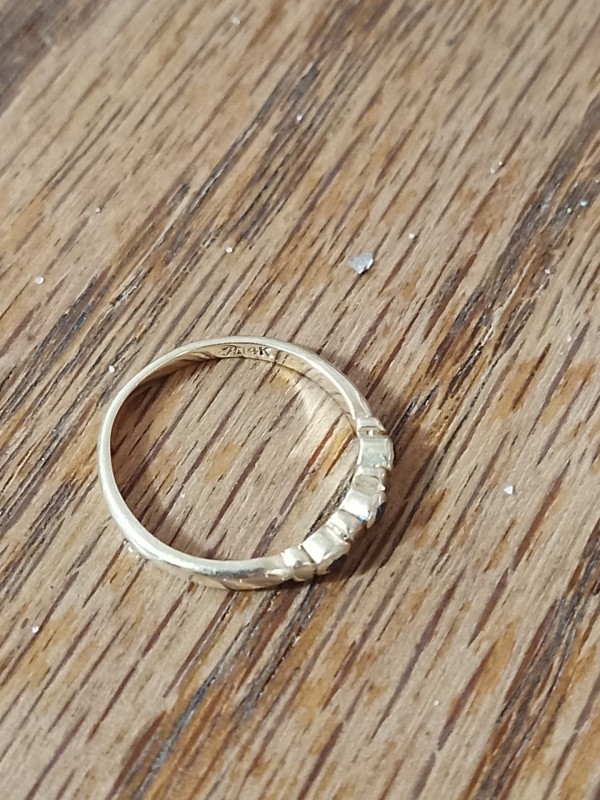
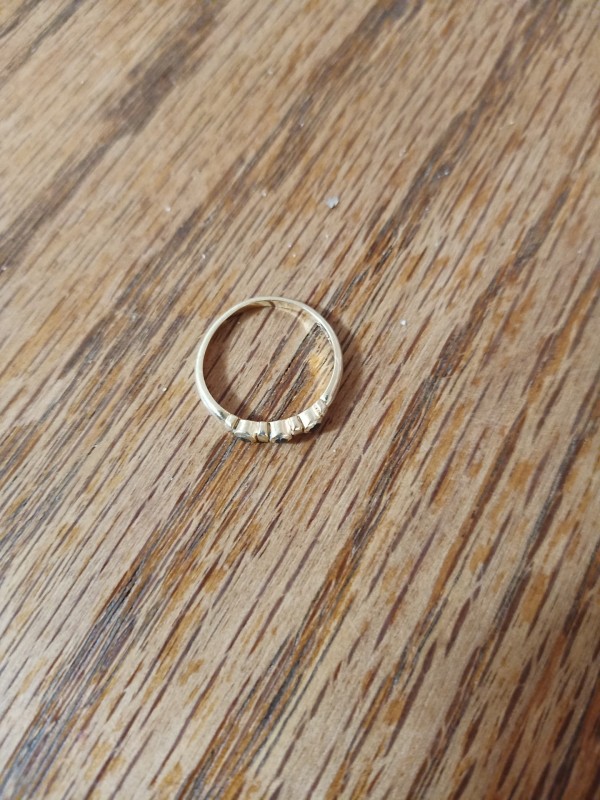
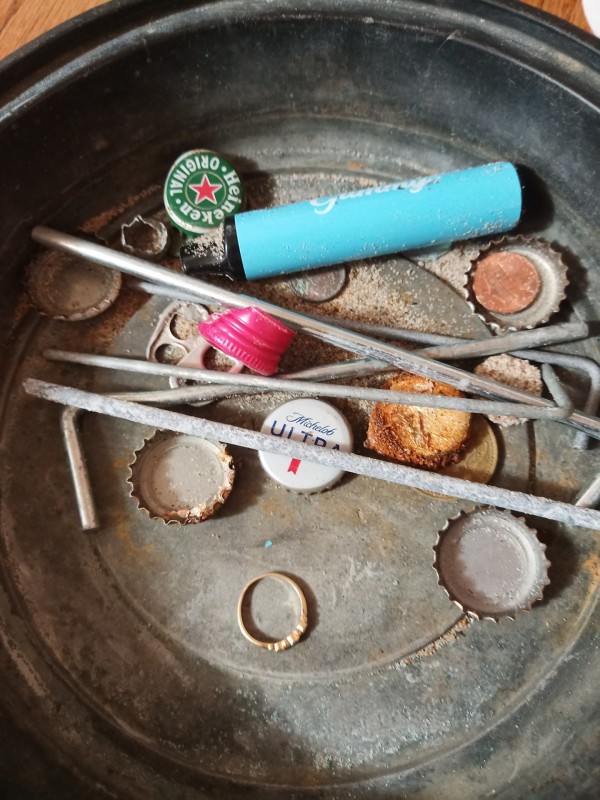
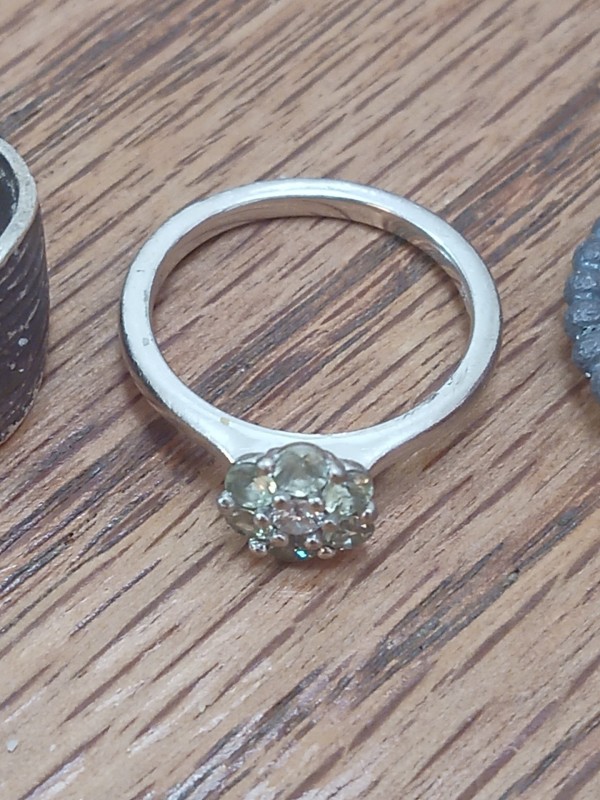
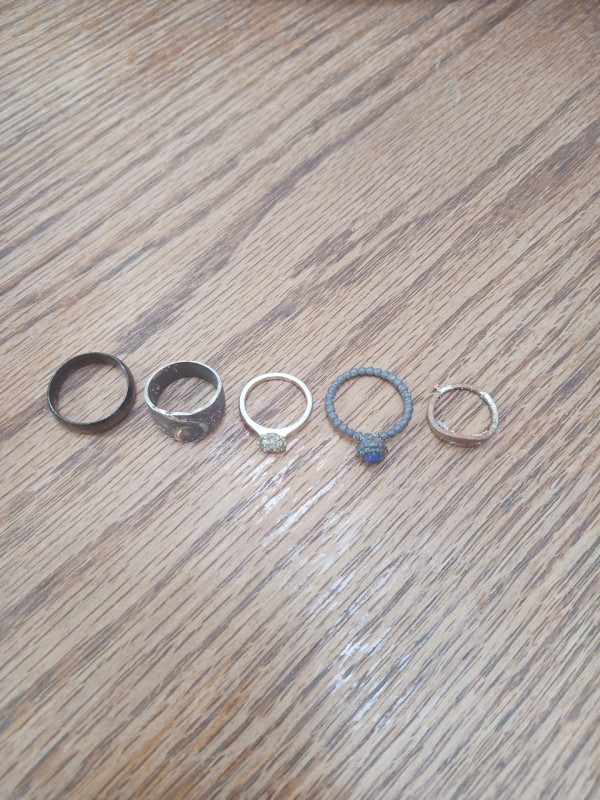
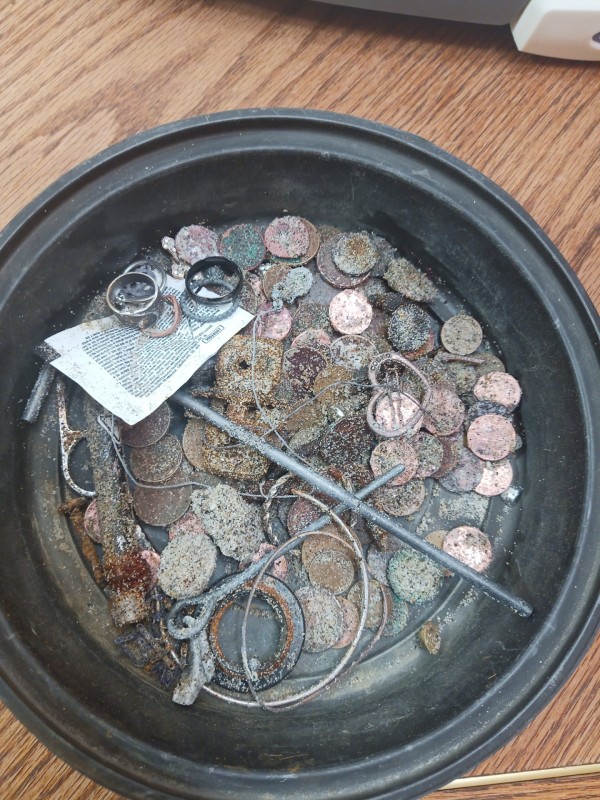
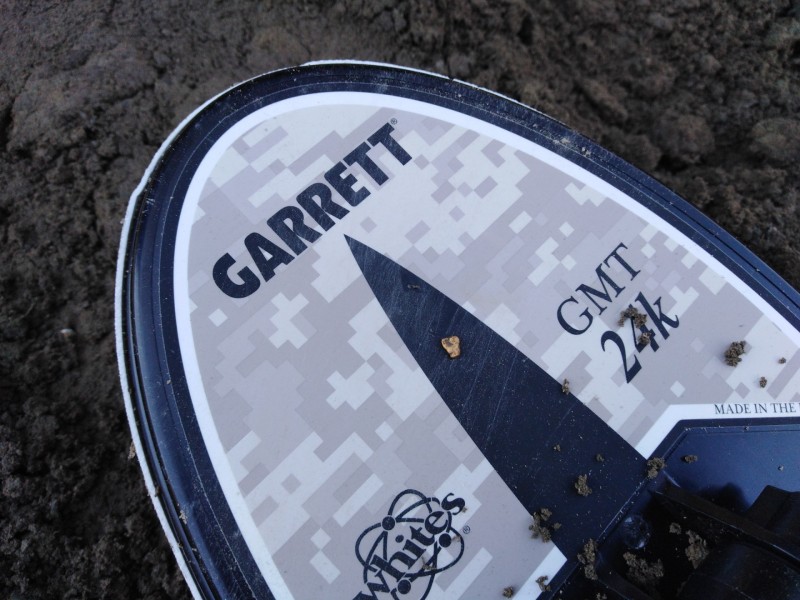
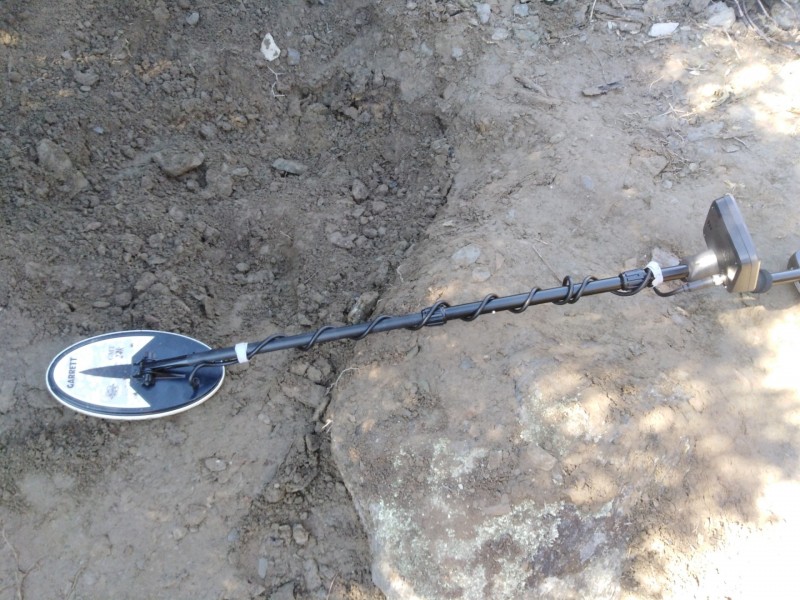
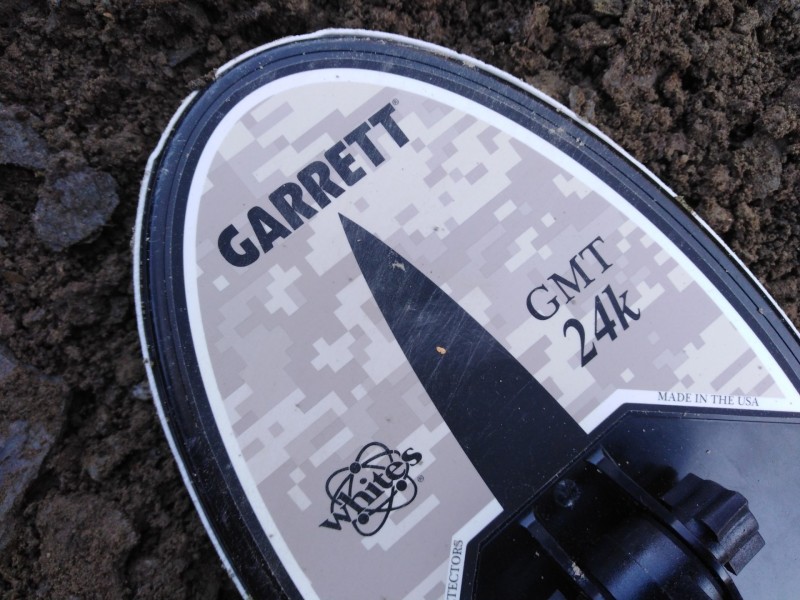
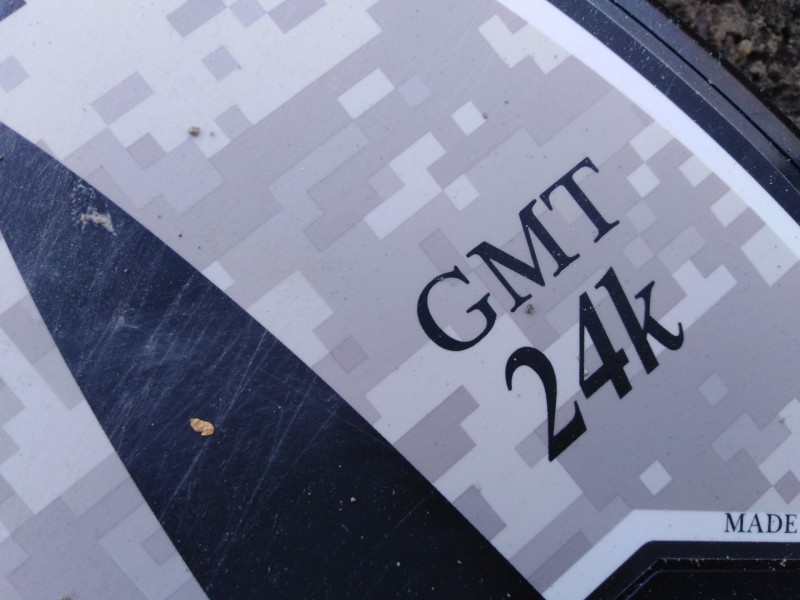
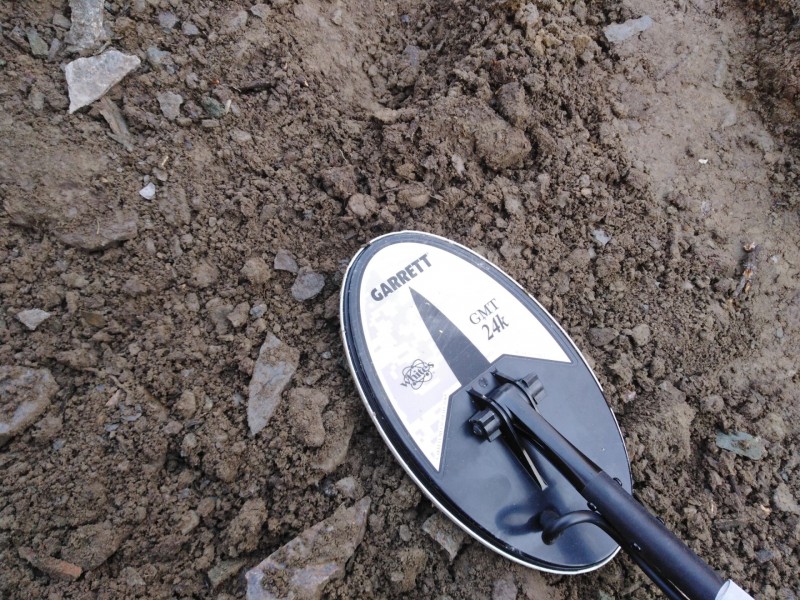
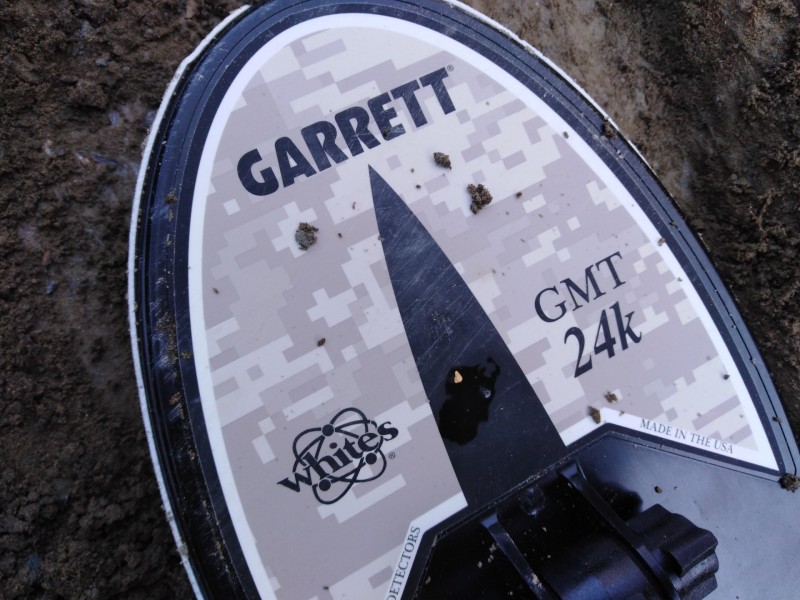
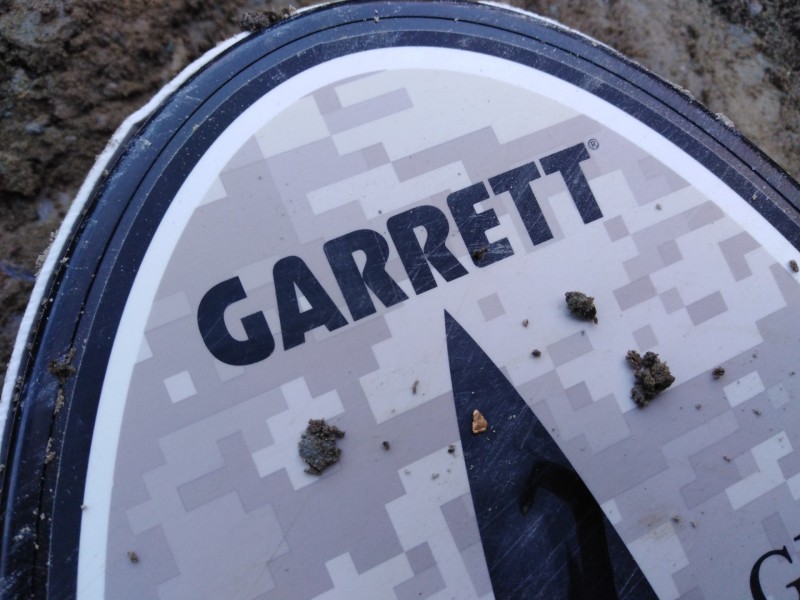
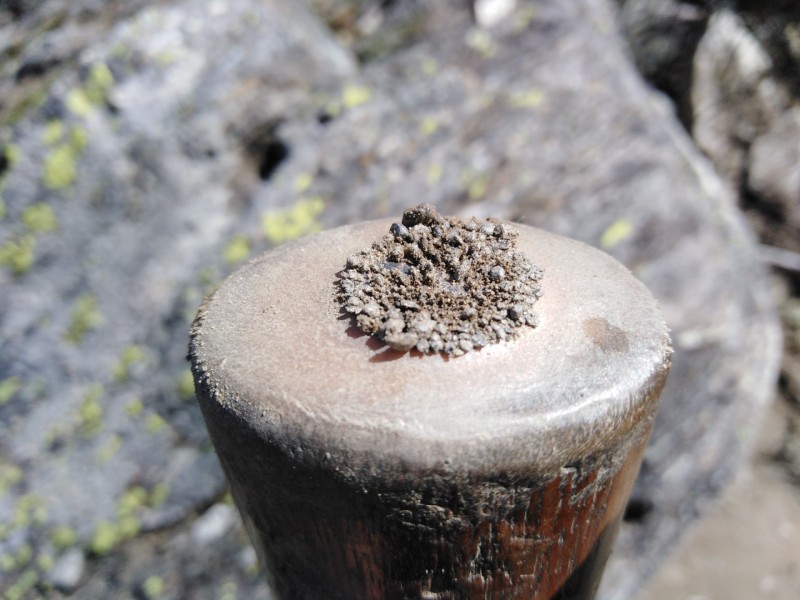
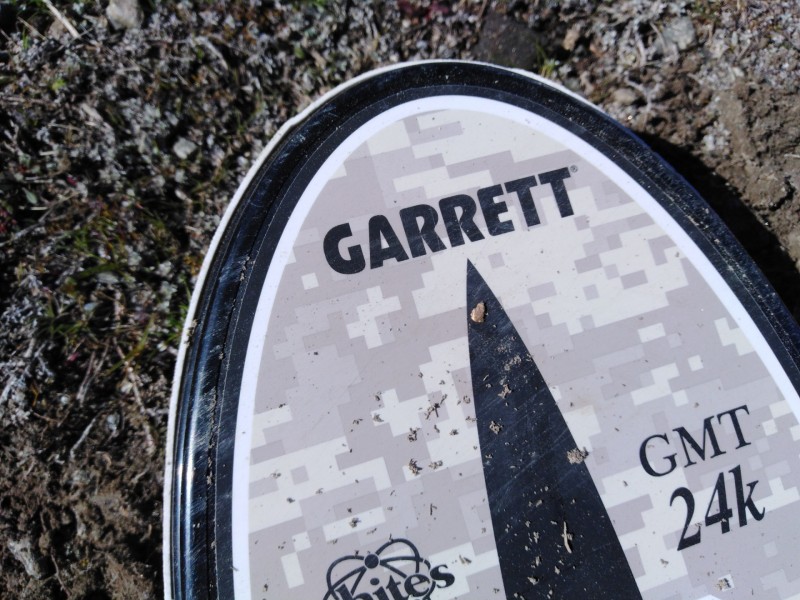
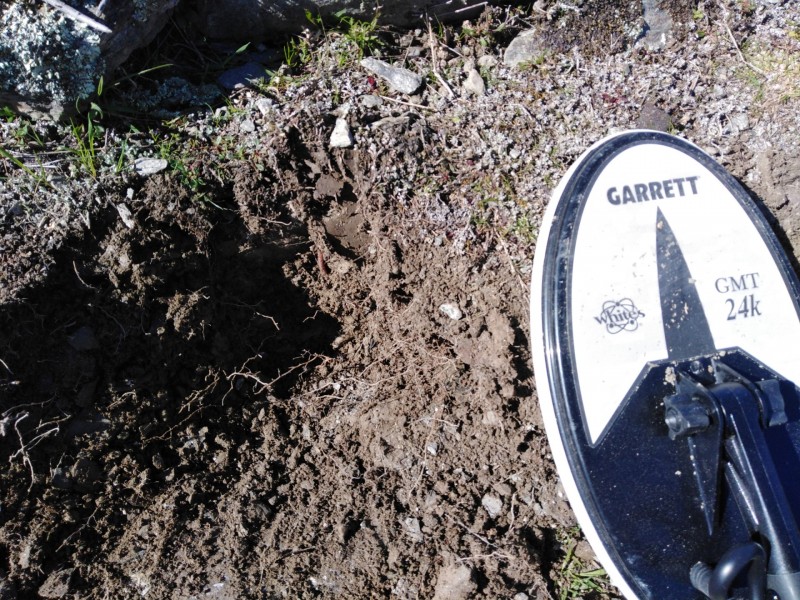
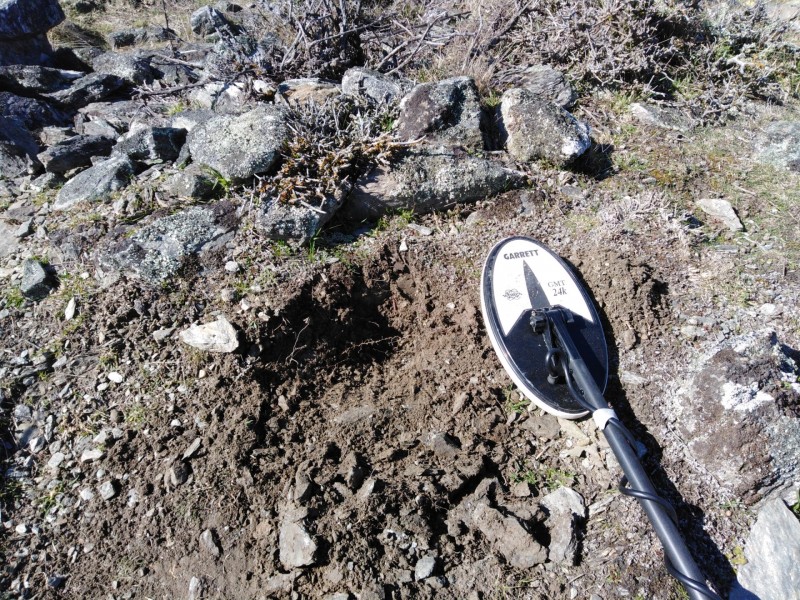
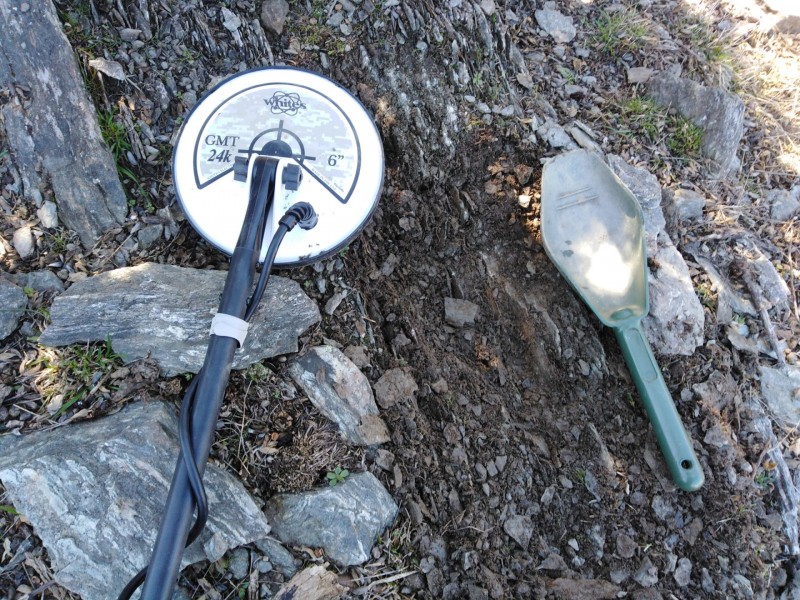
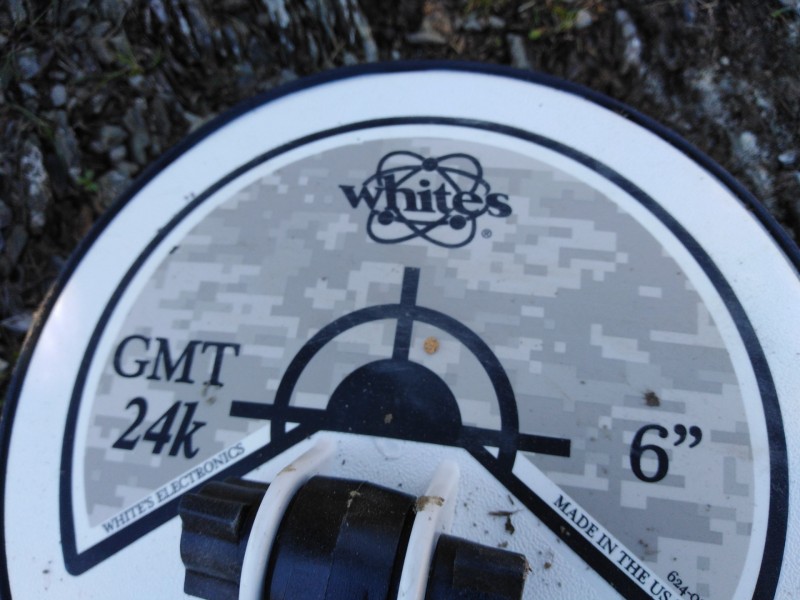
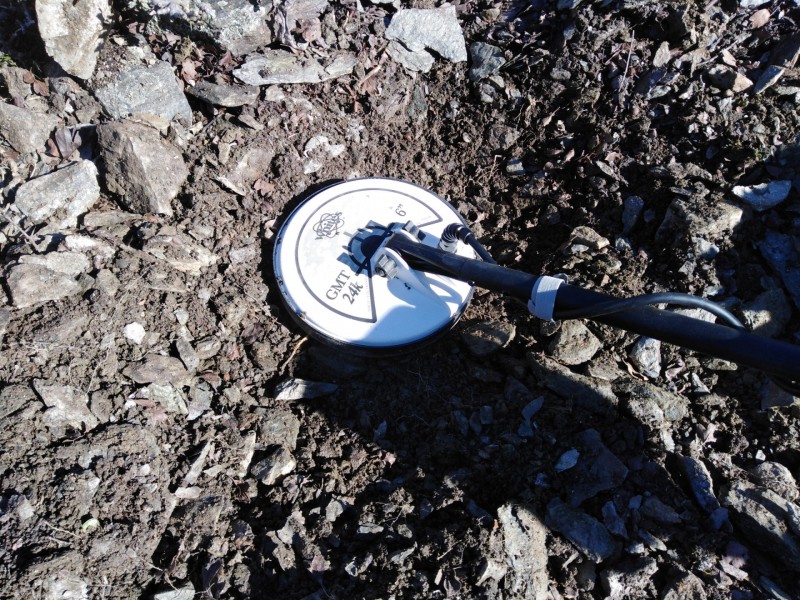
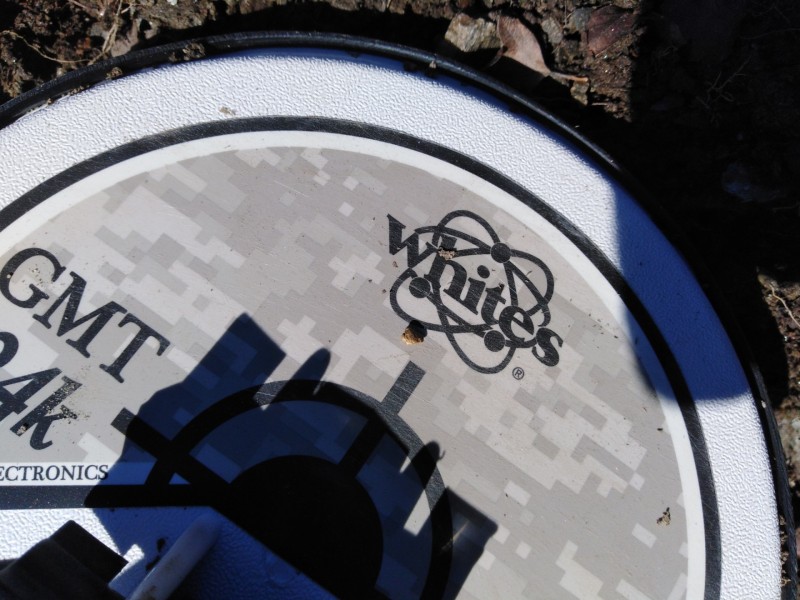
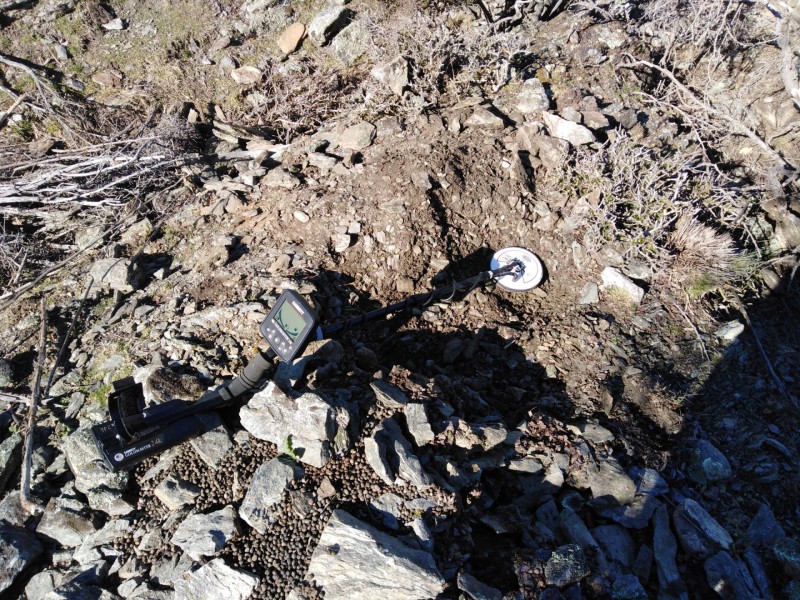
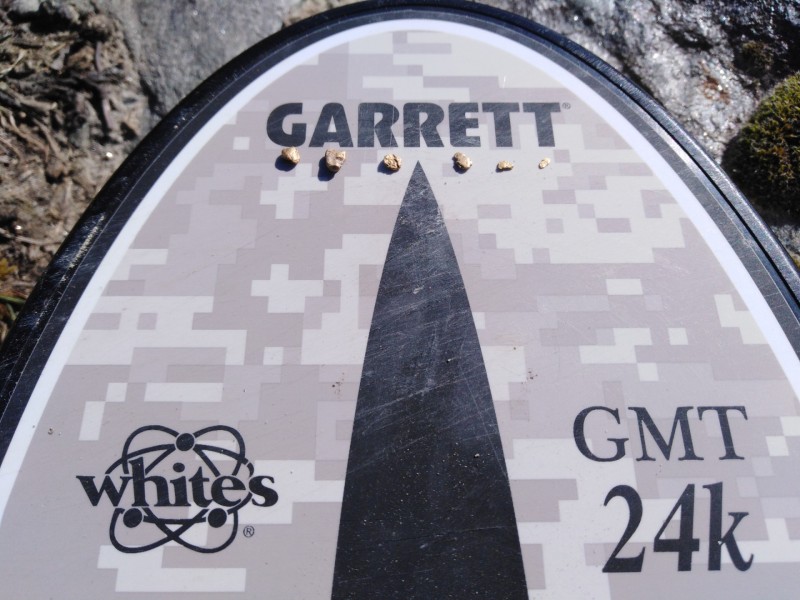
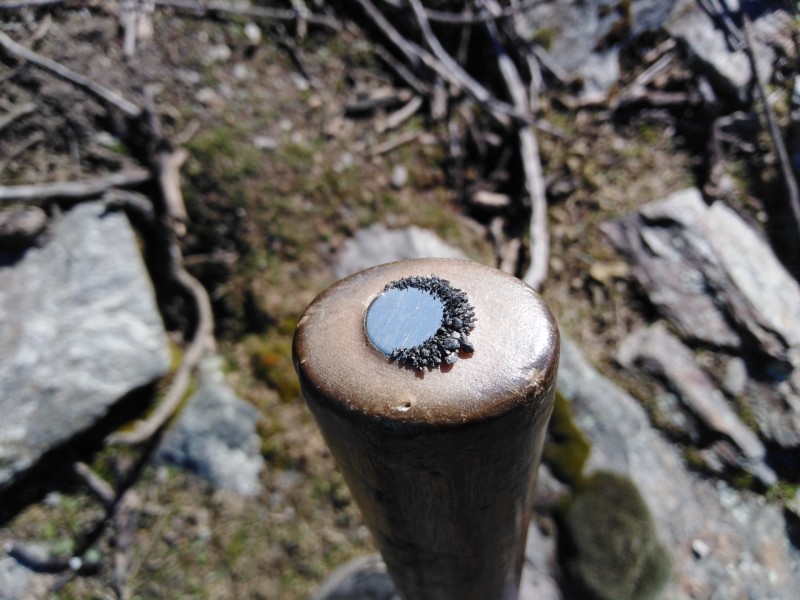
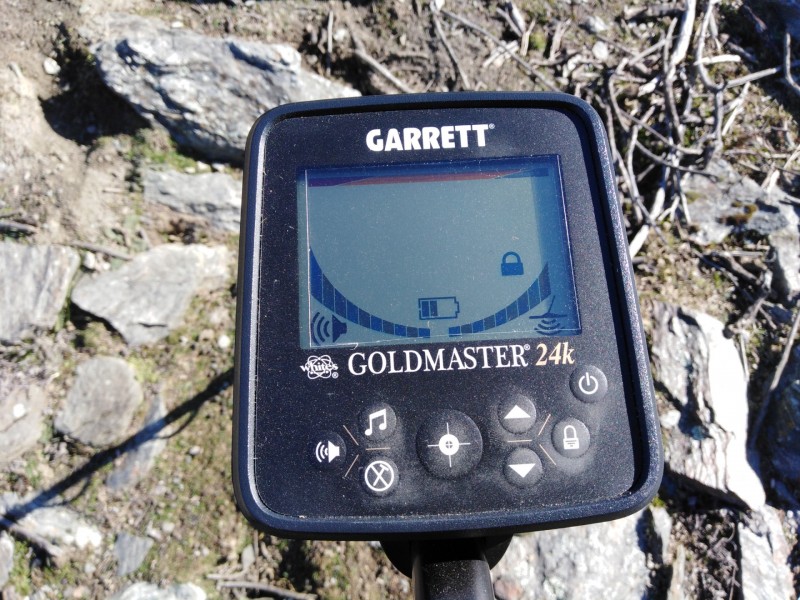
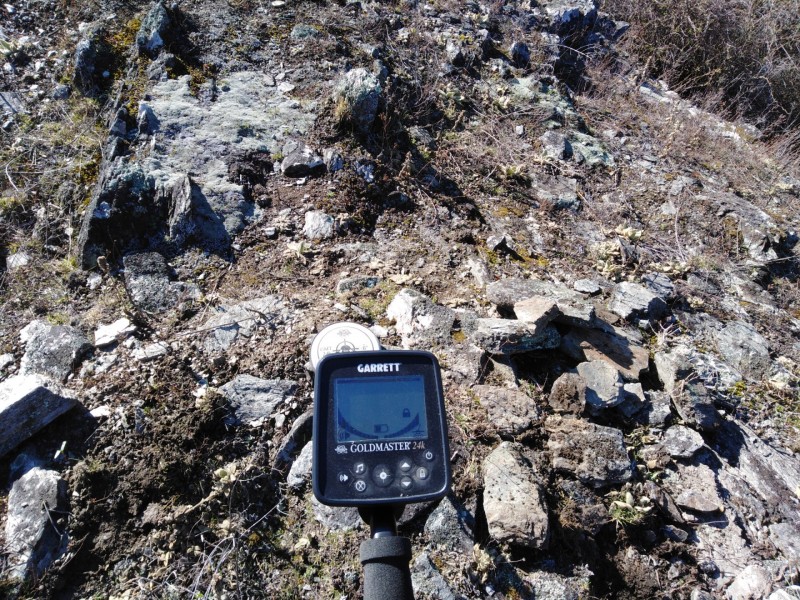
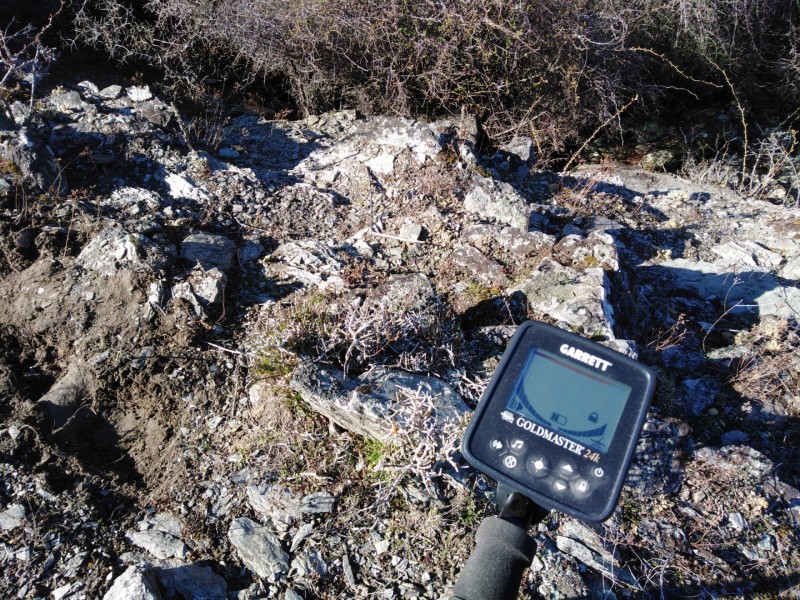
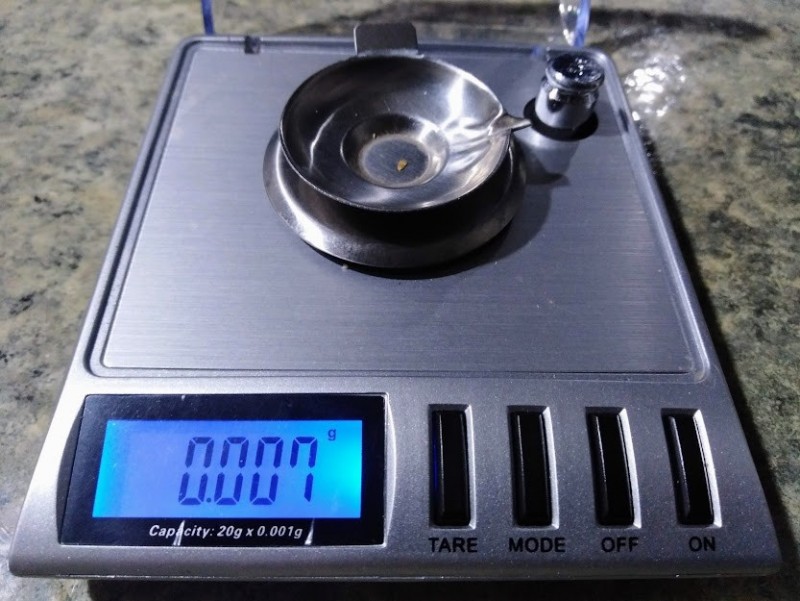
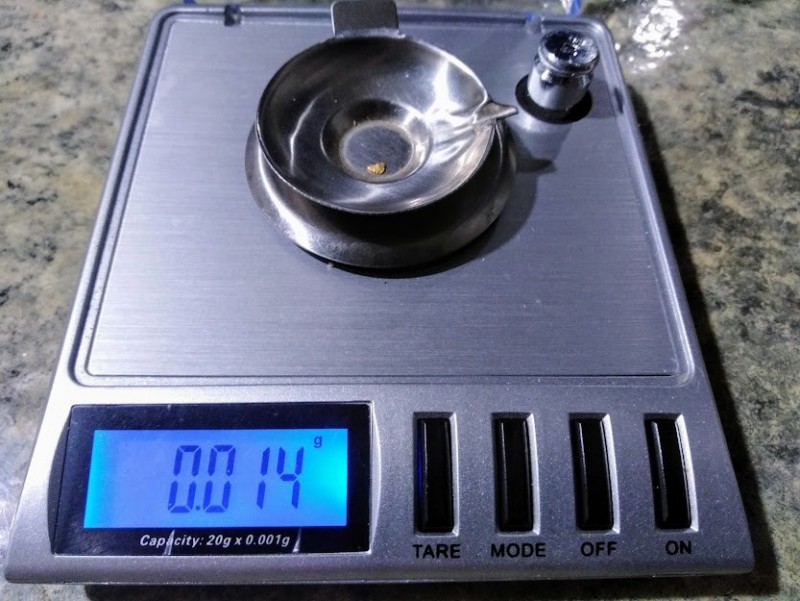
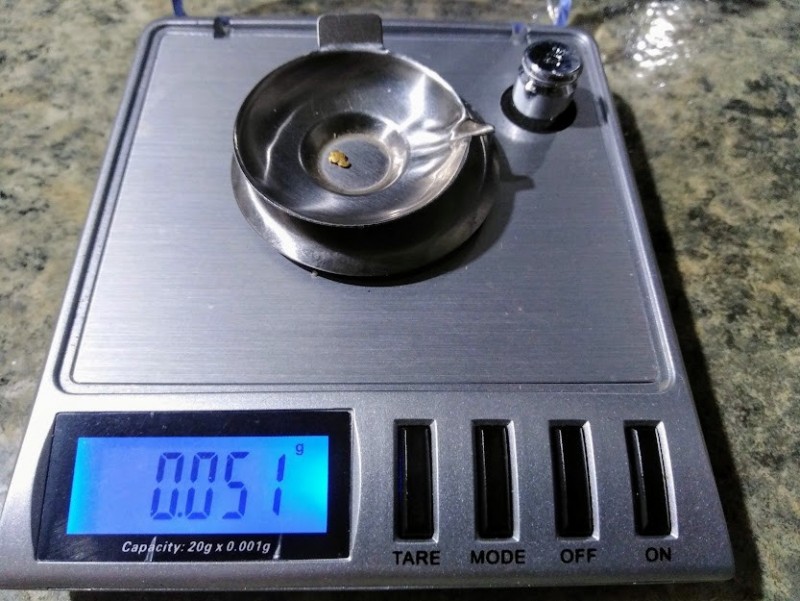
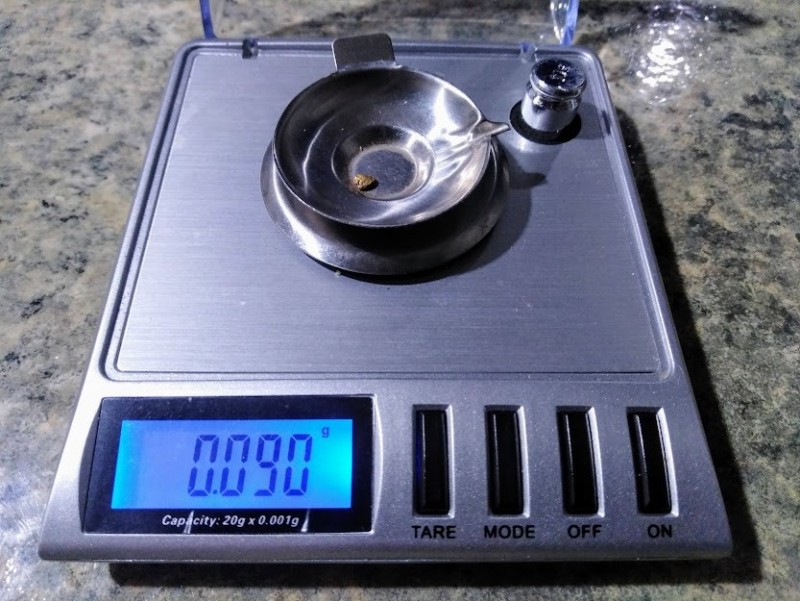
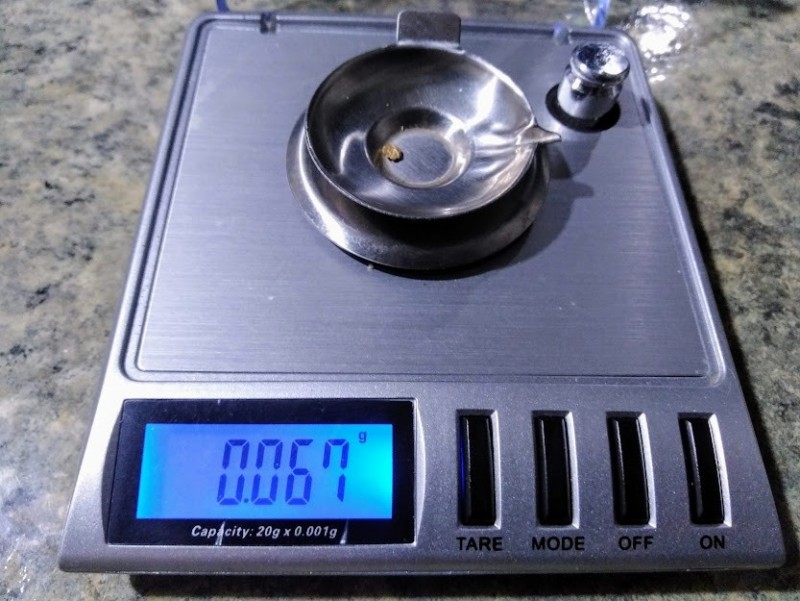
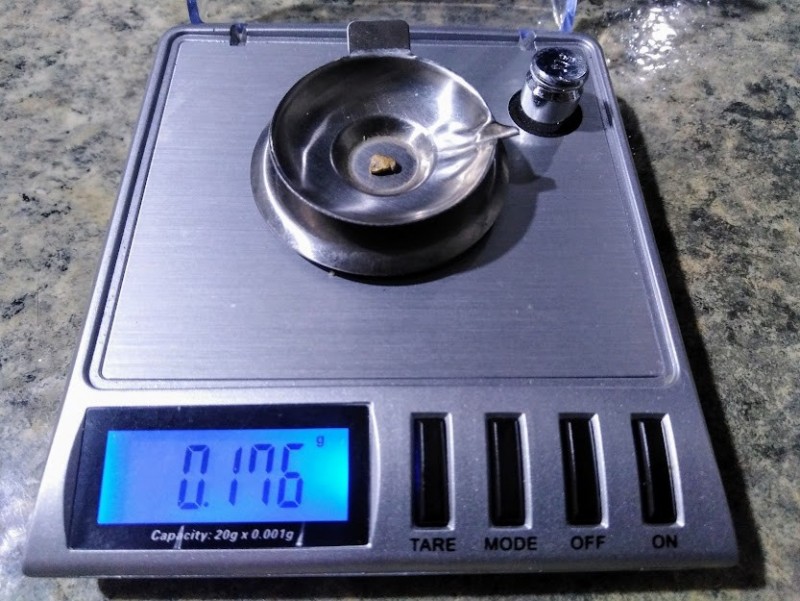
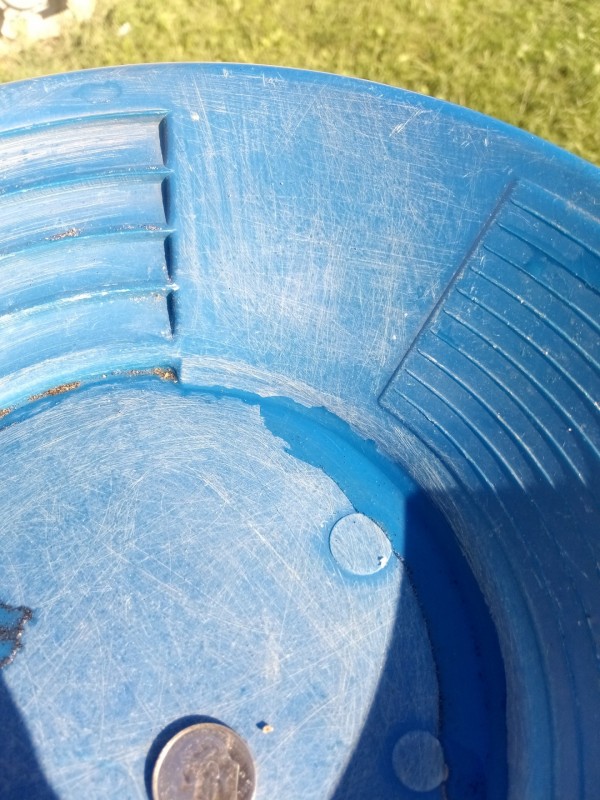

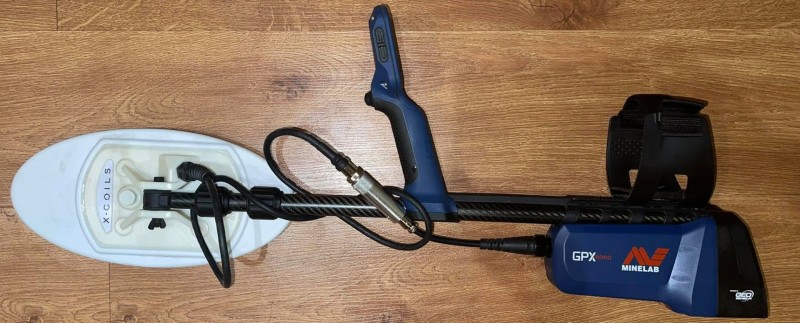
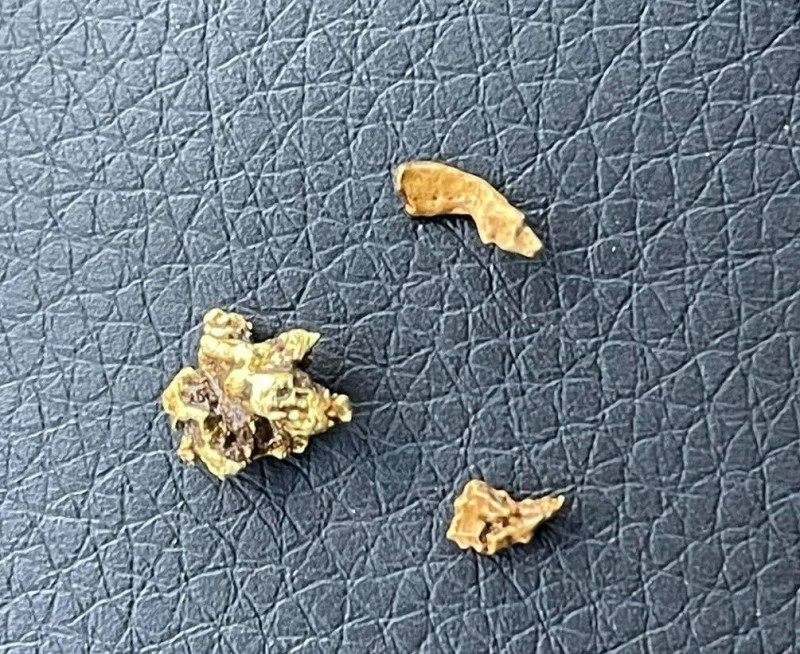
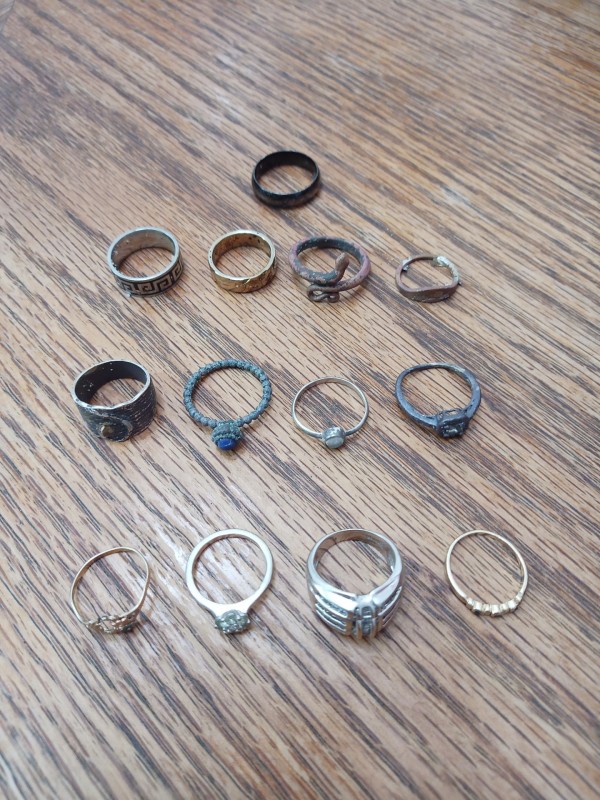
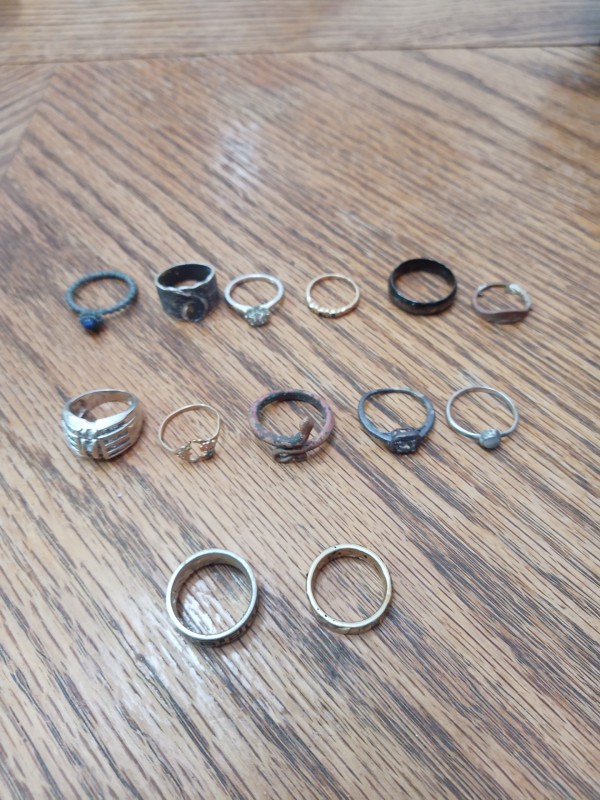
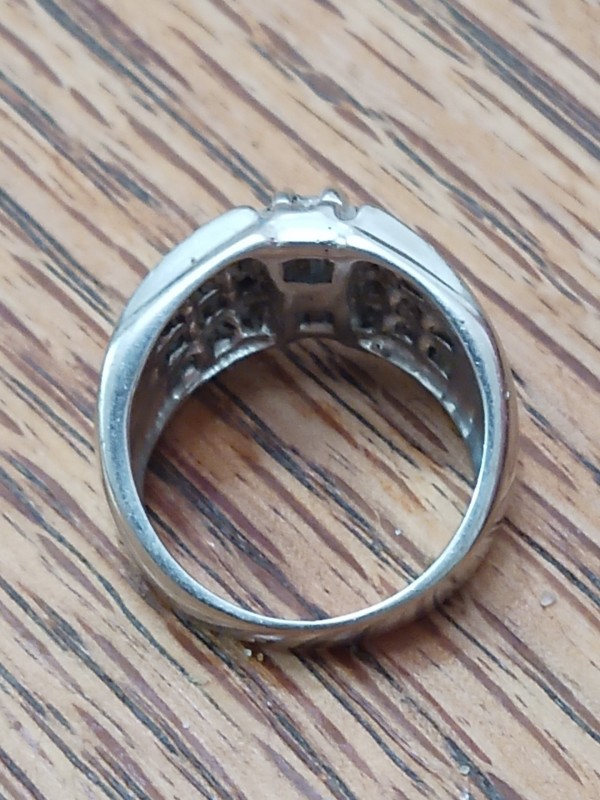
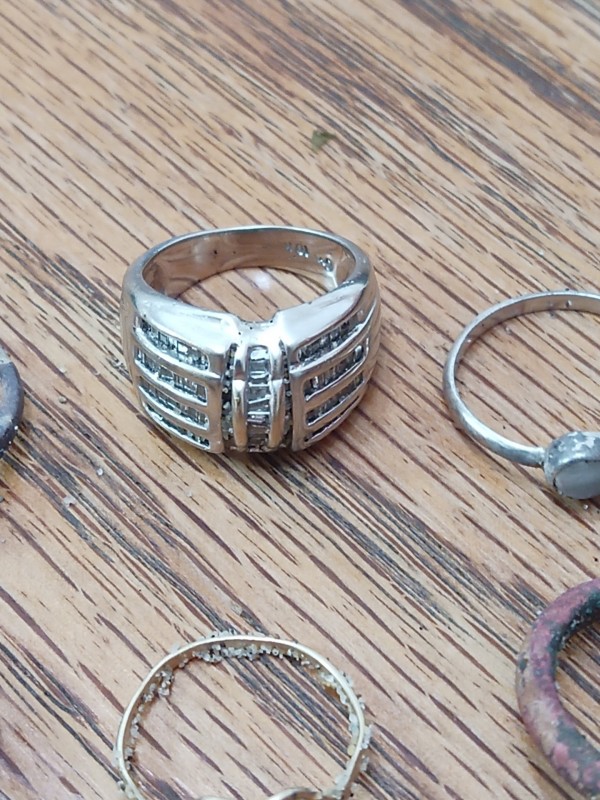
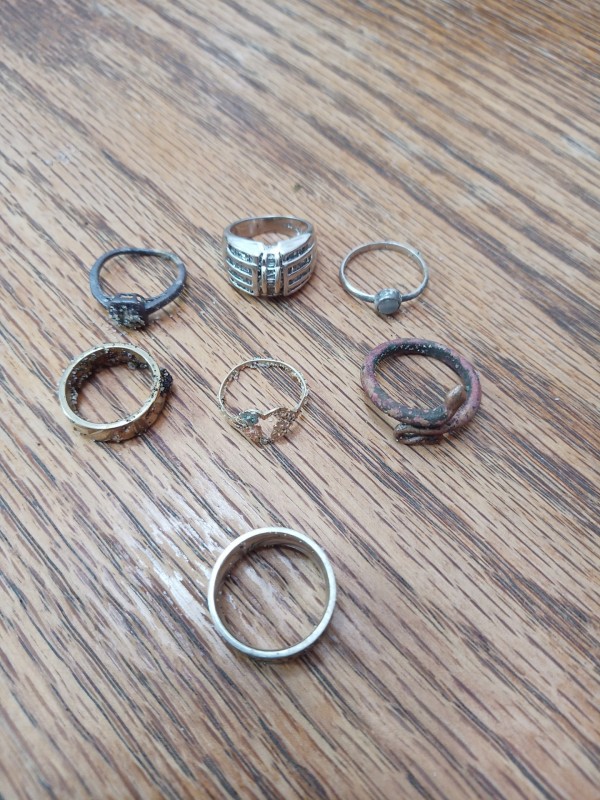
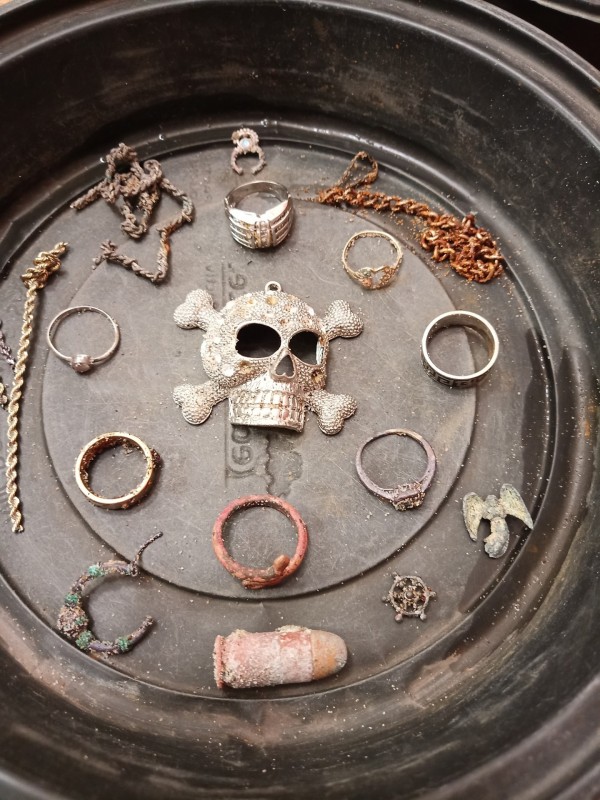
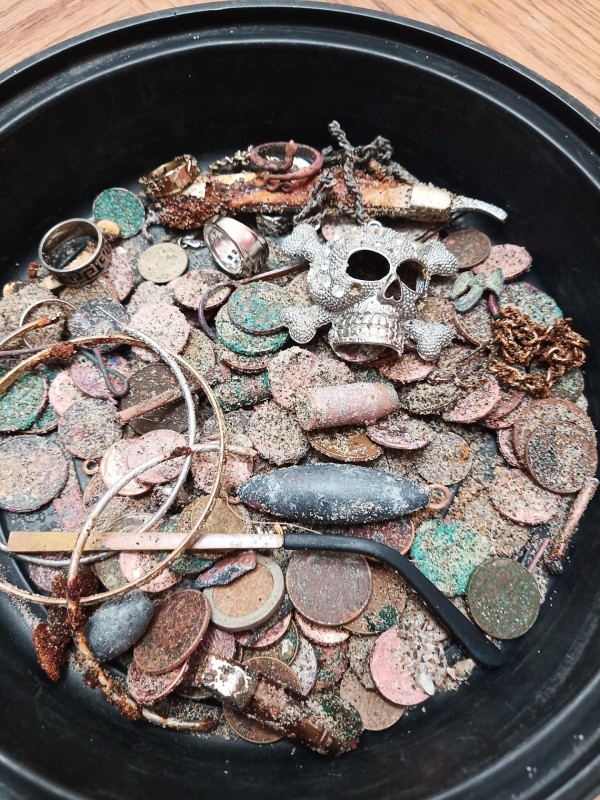
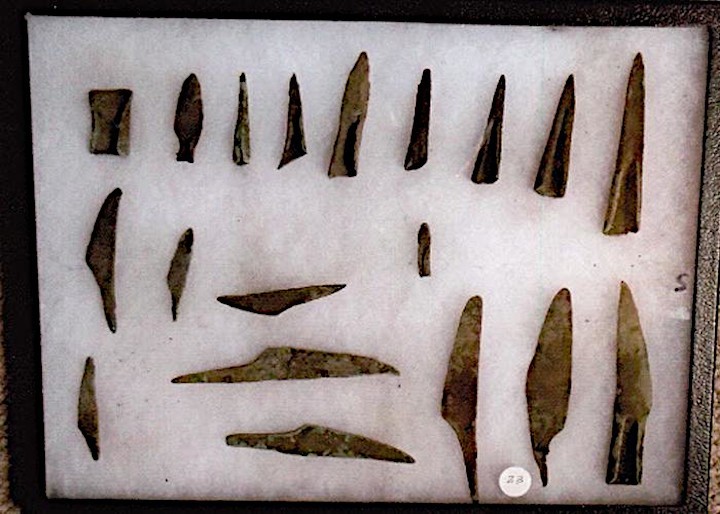
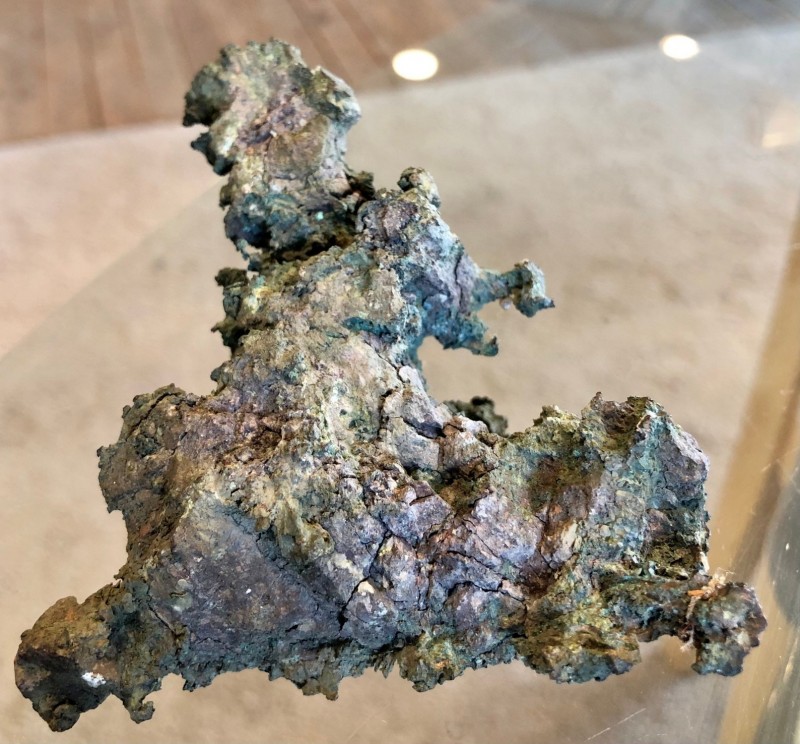
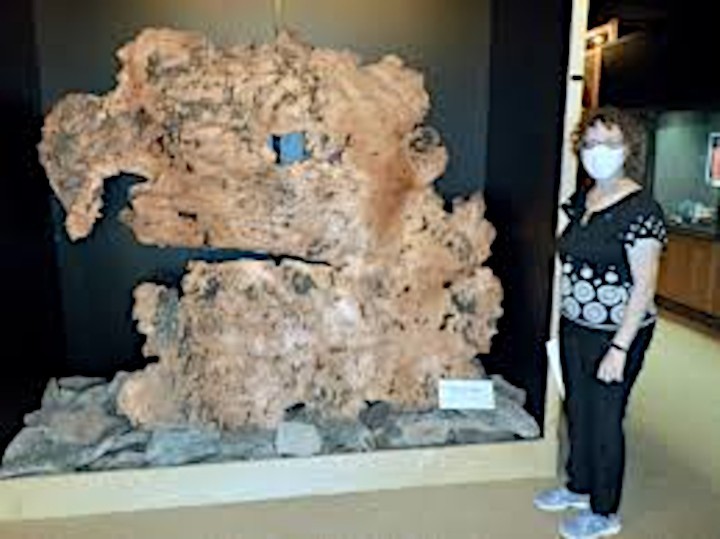
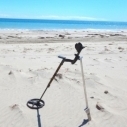
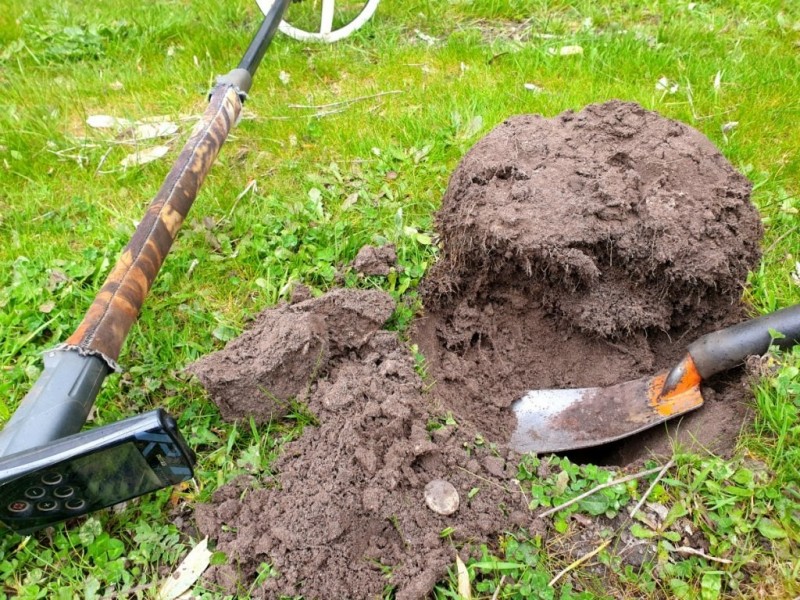
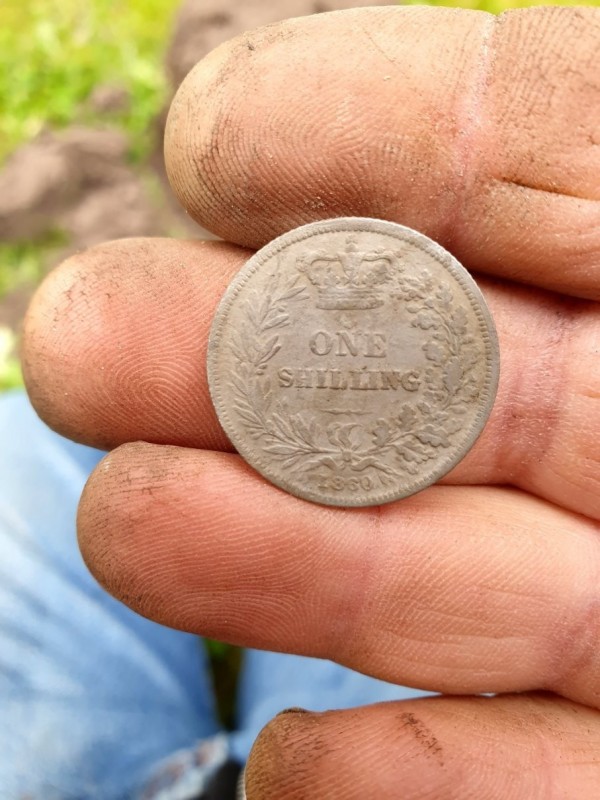
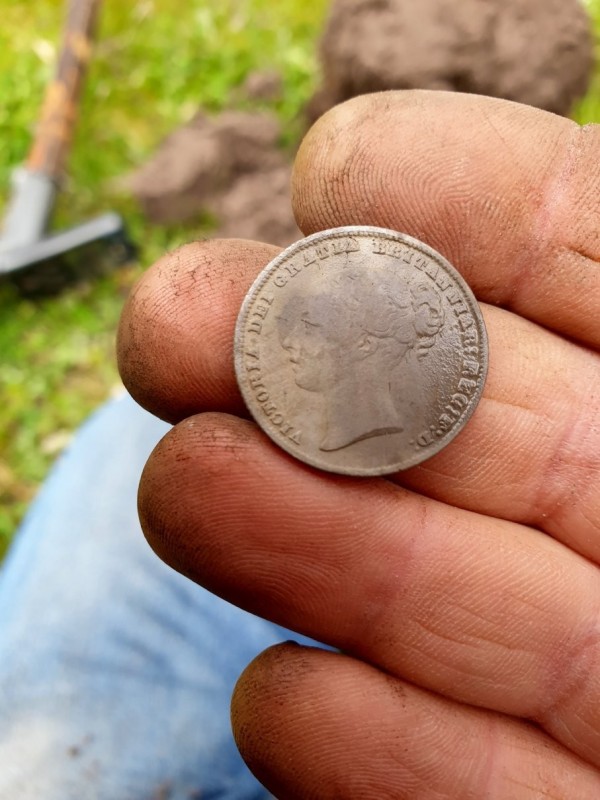
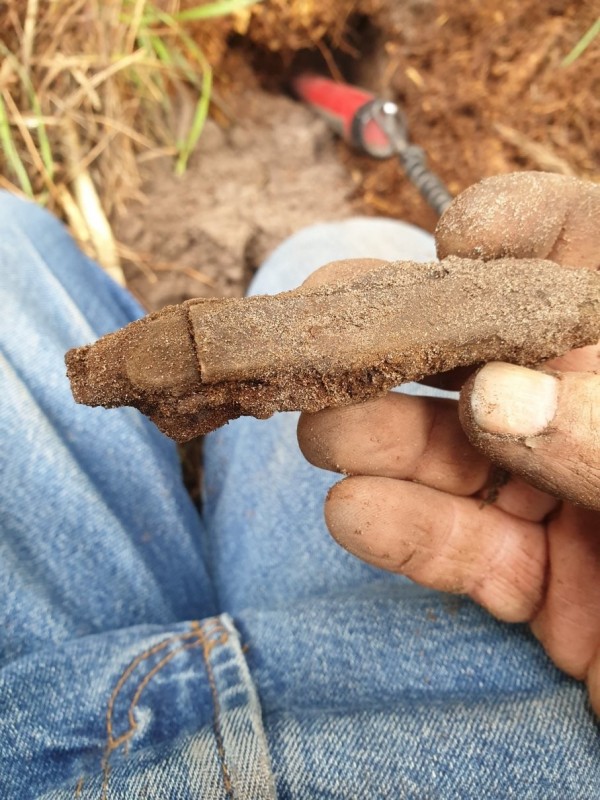
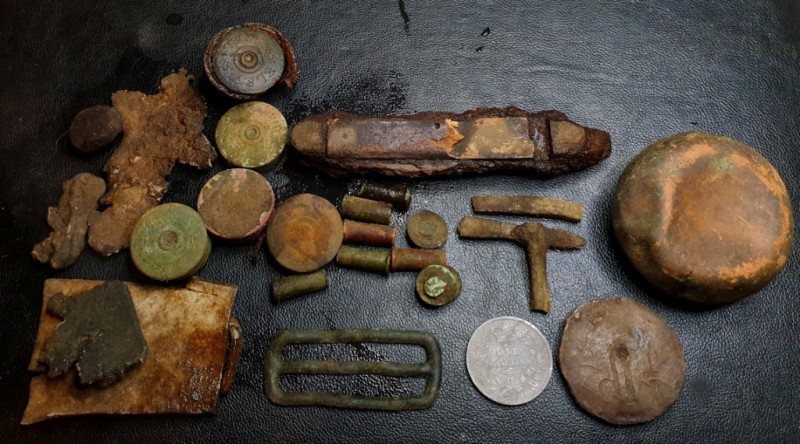
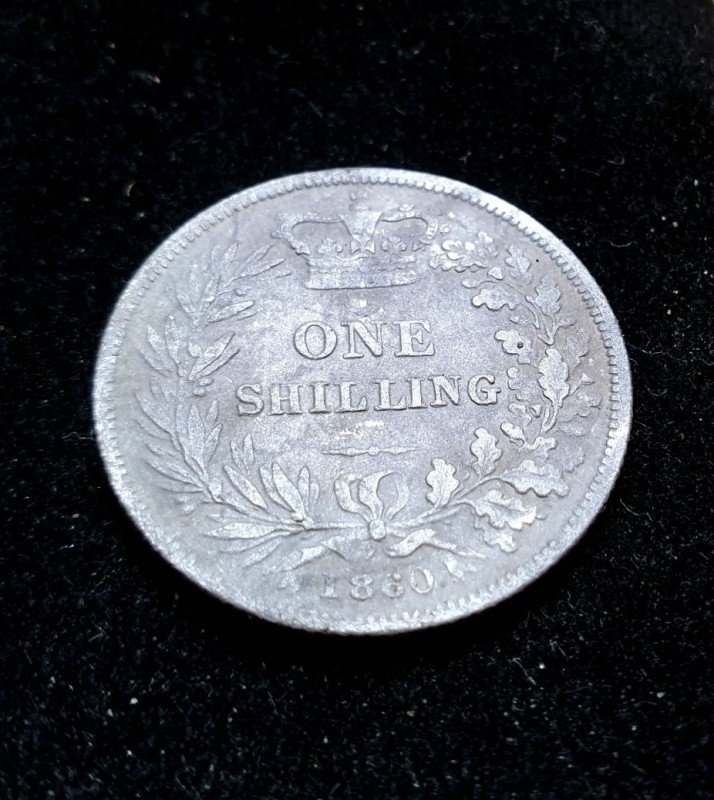
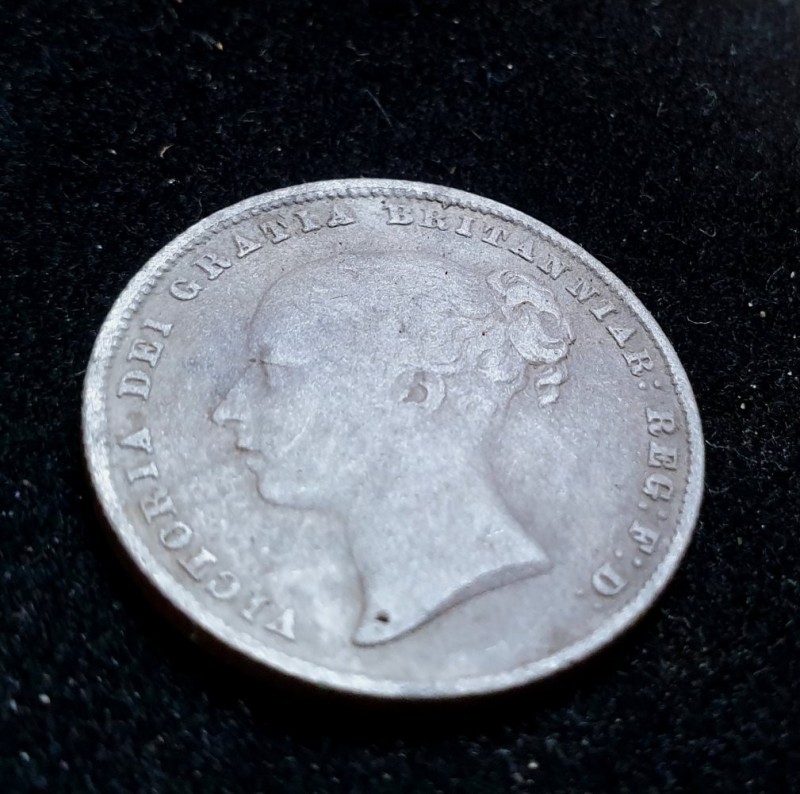
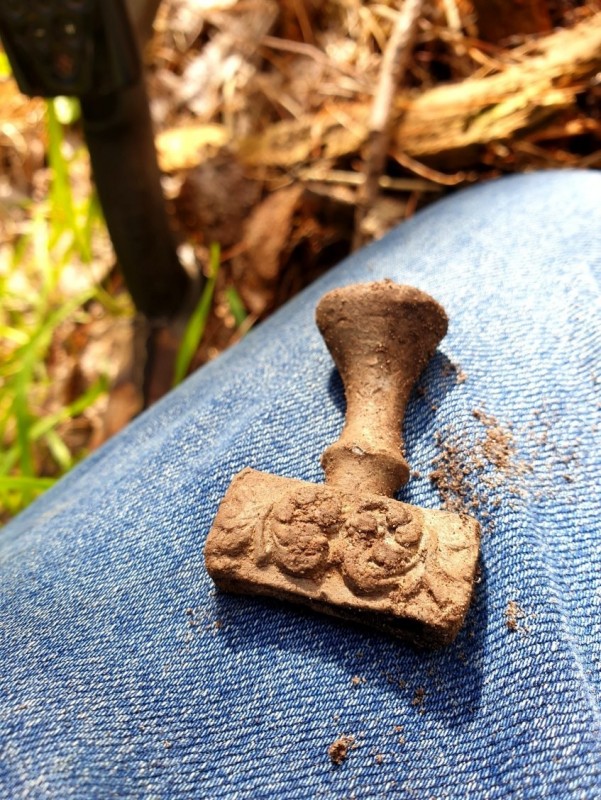
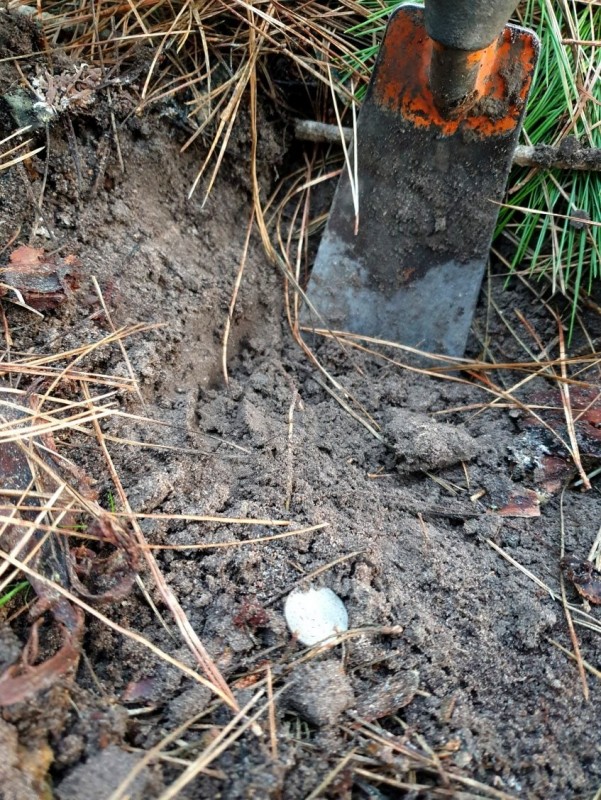
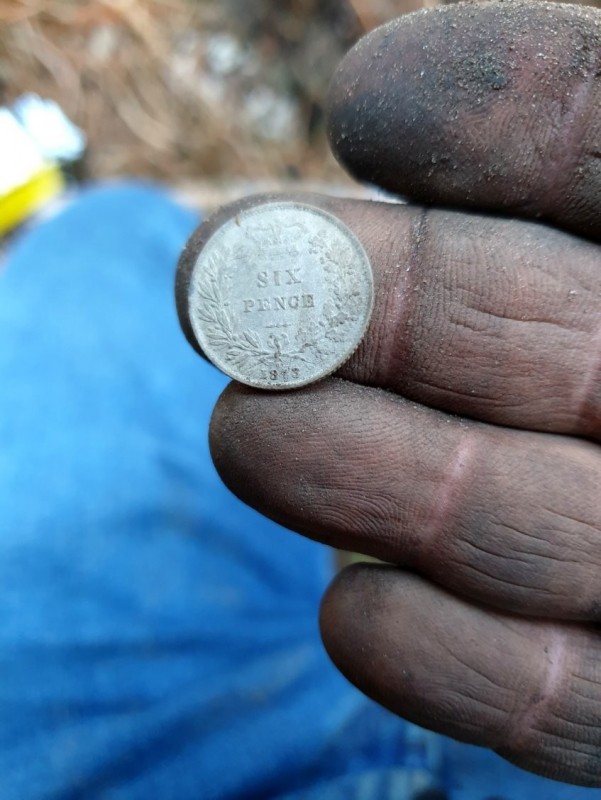
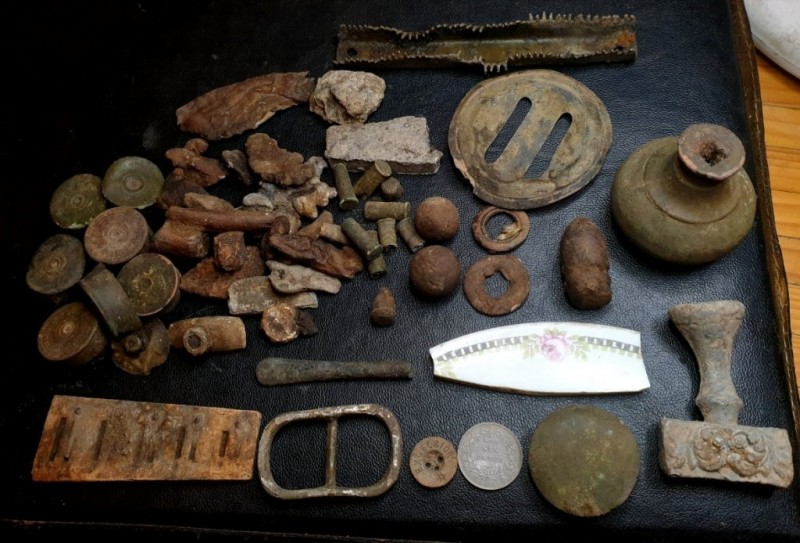
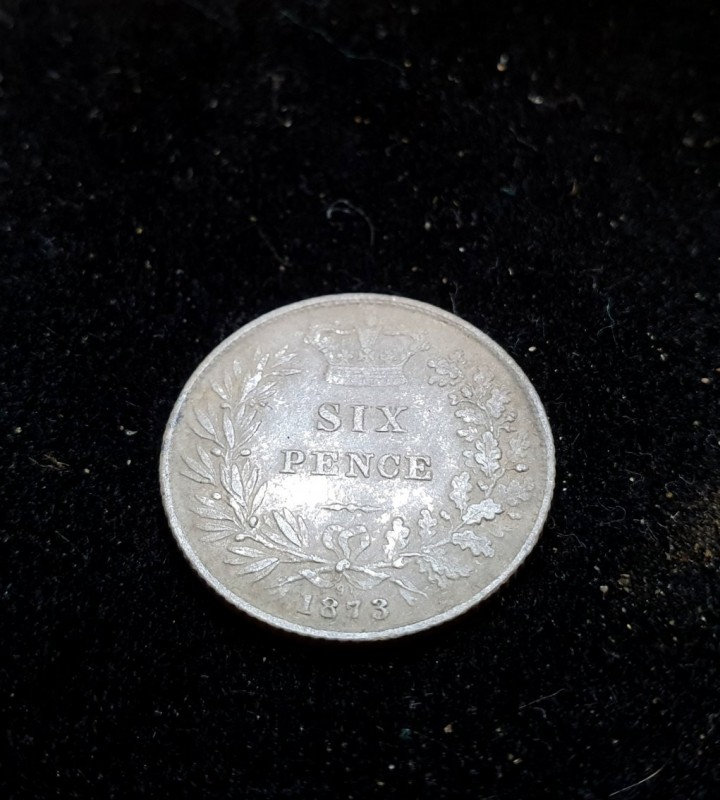
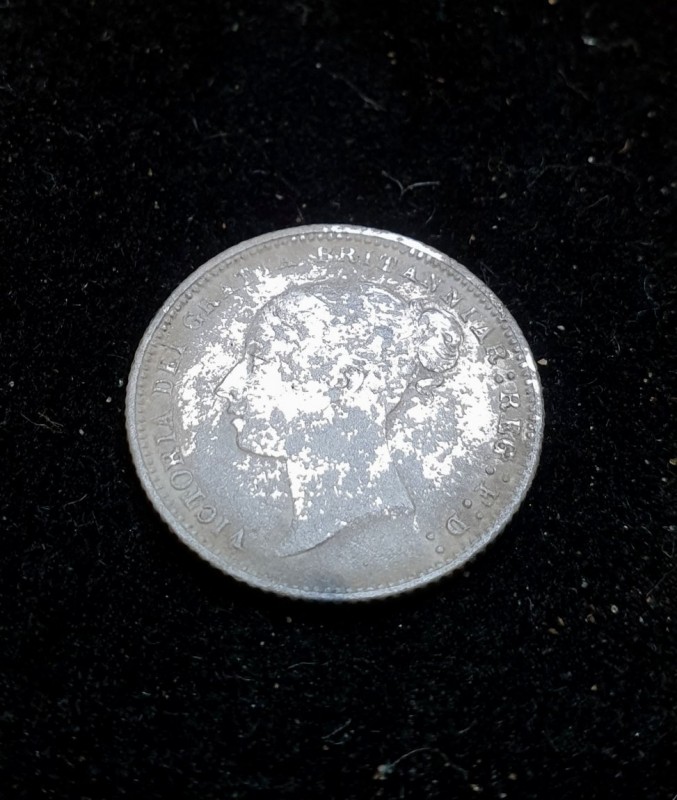
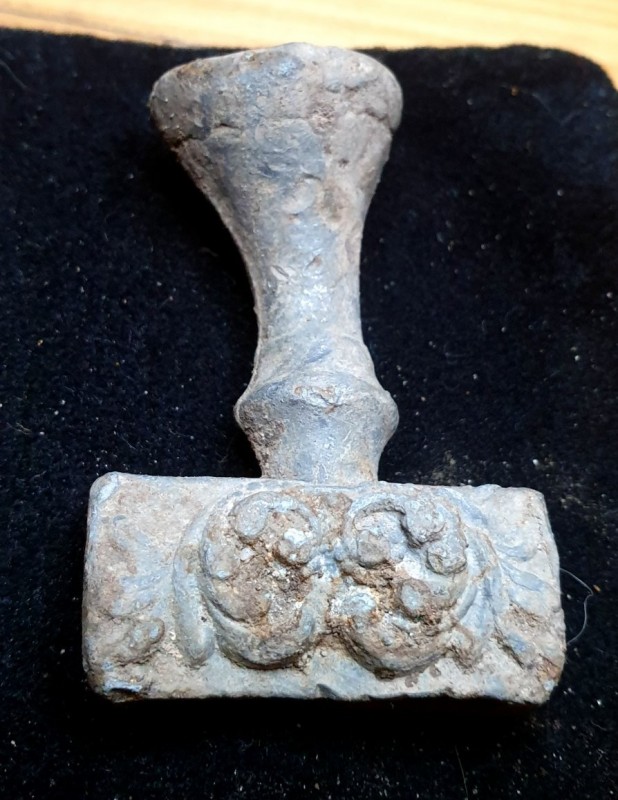
.thumb.jpg.95344db3aeef0a4c6c73420daa366191.jpg)


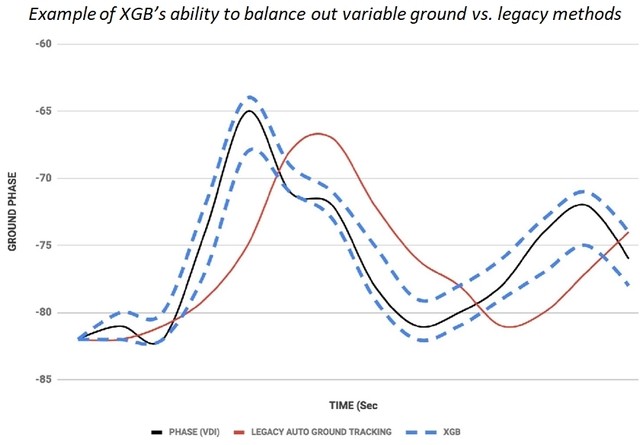
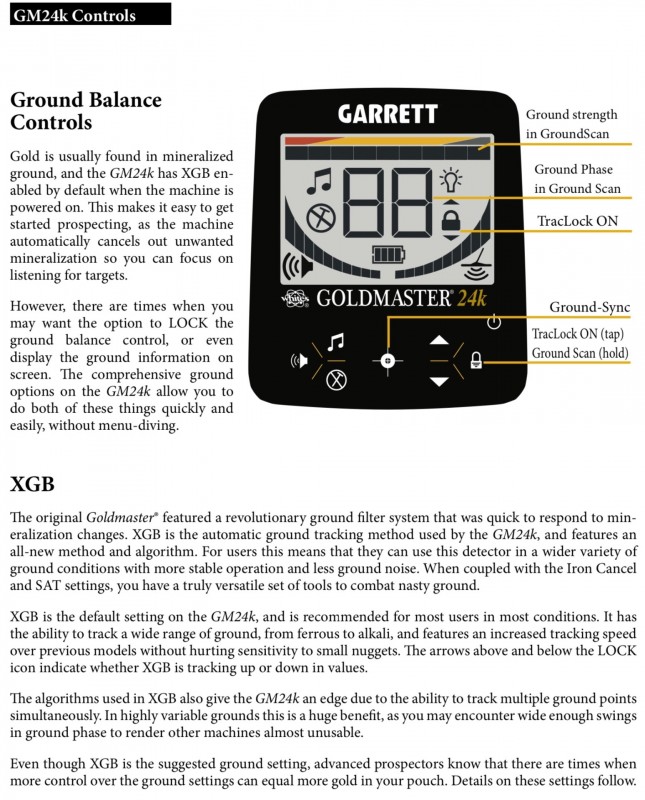
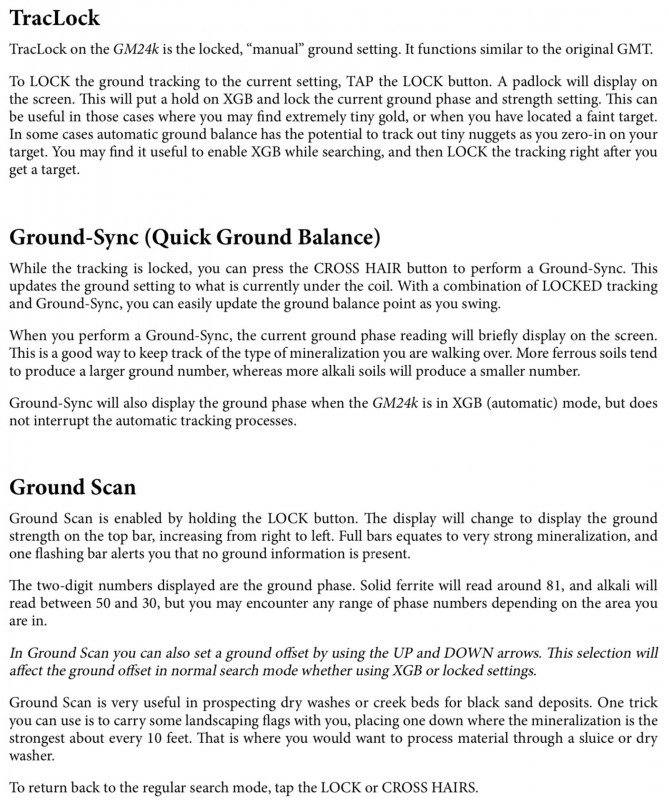
.thumb.jpg.8761b3d9b3da119b9e6d1912f67275ad.jpg)
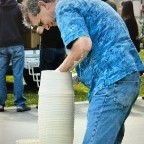
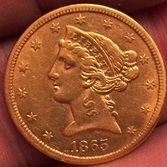

.thumb.jpg.77e4cb5bf39d44bdd2050d2edb7dfdb1.jpg)
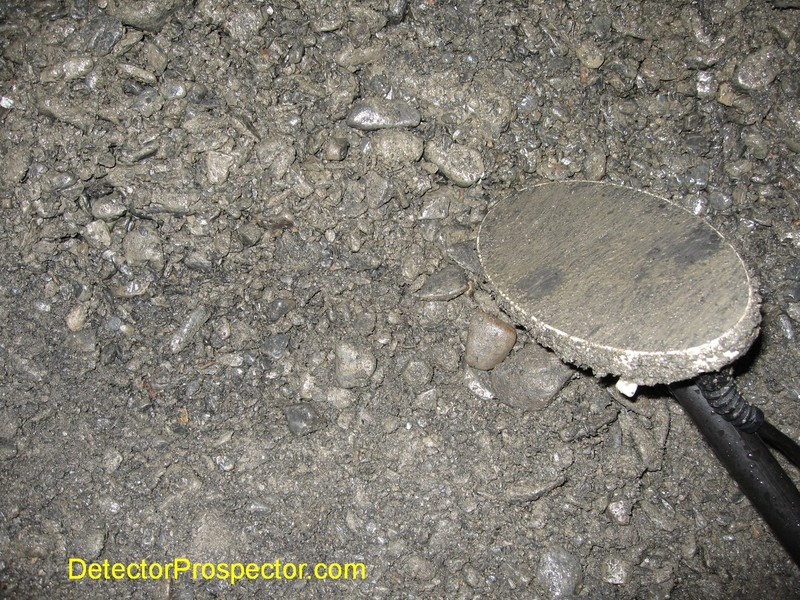
.thumb.jpg.d71314a45f3dc82bf75ac1b96e7e9201.jpg)

